MADE IN TAIWAN
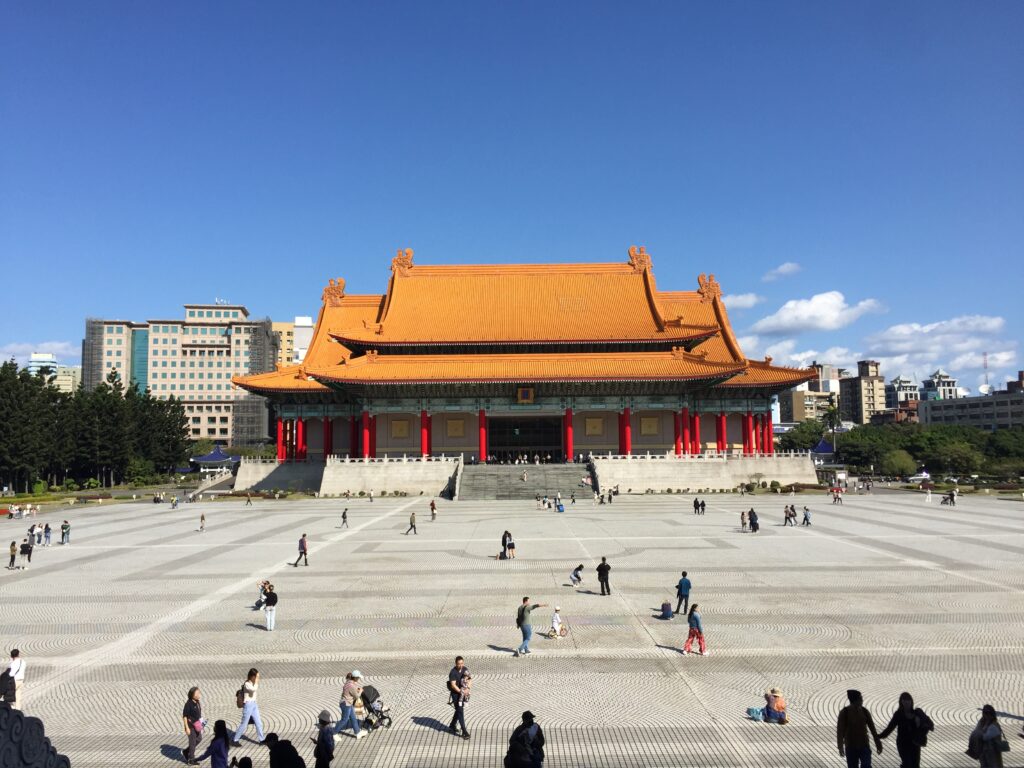
Taiwan, an “independent” island in the Pacific, precariously close to a gigantic neighbour that looks at it with a mixture of disdain and desire, is a faraway land of mystery and opportunity. In the modern world, when one thinks of Taiwan the first thing they think of is impending war. Conventional wisdom suggested an invasion, if it were to come, would not occur before 2026. This was 2024. I’d probably dodge a proverbial bullet if I went this year.
Not a country that’s very high on peoples’ dream destinations, I was drawn to Taiwan by a mixture of curiosity, a desire for adventure, and a sense of urgency. After all, this may have been one of the last chances I’d get to visit the place. And given that January is as bleak a month to be in Ireland as one can imagine, and there is no winter in the tropics, I decided to head off to a destination as far from home as I’d ever been. I was venturing to a land I knew little about, and while I’d done some preliminary research and plotted a rough itinerary, I would get my bearings once I arrived. My travel strategy was to be a part time tourist and part time flaneur. I would go to the streets of this country, and then let those roads take me where they willed.
Taiwan is a country best accessed from bigger nearby hubs in China, Thailand, Hong Kong, and Japan. I flew in from crazy Macau, about an hour and a half away. Visas can be obtained on arrival if you’re an EU passport holder, and the process of immigration is painless and straightforward. Don’t bring fruit or foodstuffs into the country though. Even carrying an innocent apple involves signing a declaration. And as for anything seriously contraband, don’t even consider it. I wasn’t going to.
It was 22:00 when I landed at Taipei International Airport, and the reception of my accommodation closed at 23:00, so I needed to make tracks quickly. Trains from the airport take about 35 minutes into the centre of Taipei, and cost the seemingly princely sum of 150 New Taiwanese Dollars, which works out at a more moderate €4.50. The woman who sold me the ticket even gave me some free tea as a welcome to the country. First impressions could not have been better. And those first impressions would last over the course of the 12 days I was there.
METROPOLIS
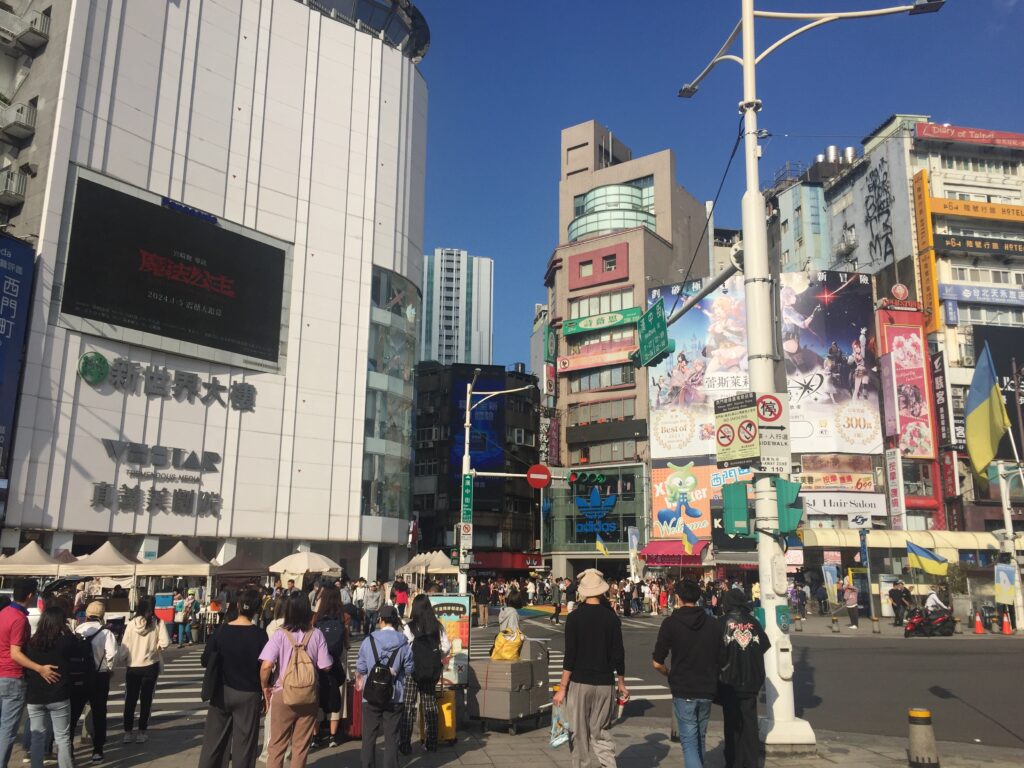
Taipei is a big bustling city of about 2.7 million people, consisting of a mixture of modest and traditional neighbourhoods nestled alongside hypermodern skyscrapers and shopping malls. 711 convenience stores are as ubiquitous as colourful taoist temples, and big branded chainstores can be found as easily as small mom and pop stores and spit and sawdust eateries. The whole town is connected by a comprehensive public transport system, traffic runs in an orderly fashion, it’s clean and safe, and the people are friendly.
It was close to my bedtime by the time I arrived at my accommodation, so I waited until morning before I went out to explore. It was a Sunday, the sun was shining, and the temperature was due to hit the mid 20s that day. For me it was like a summers day, so the remnants of Christmas decorations that I saw in various locations seemed a little incongruous. Then I recalled that it was January 14th. This certainly was unlike any January 14th I’d experienced before. I made a note to self: visit Asia more often in January. I wandered out from my hostel, with only a vague sense of where I wanted to go. I carried a guide book with me, which had good pointers and advice that I took on board, but I intended to let my travels be governed by chance as much as by design.
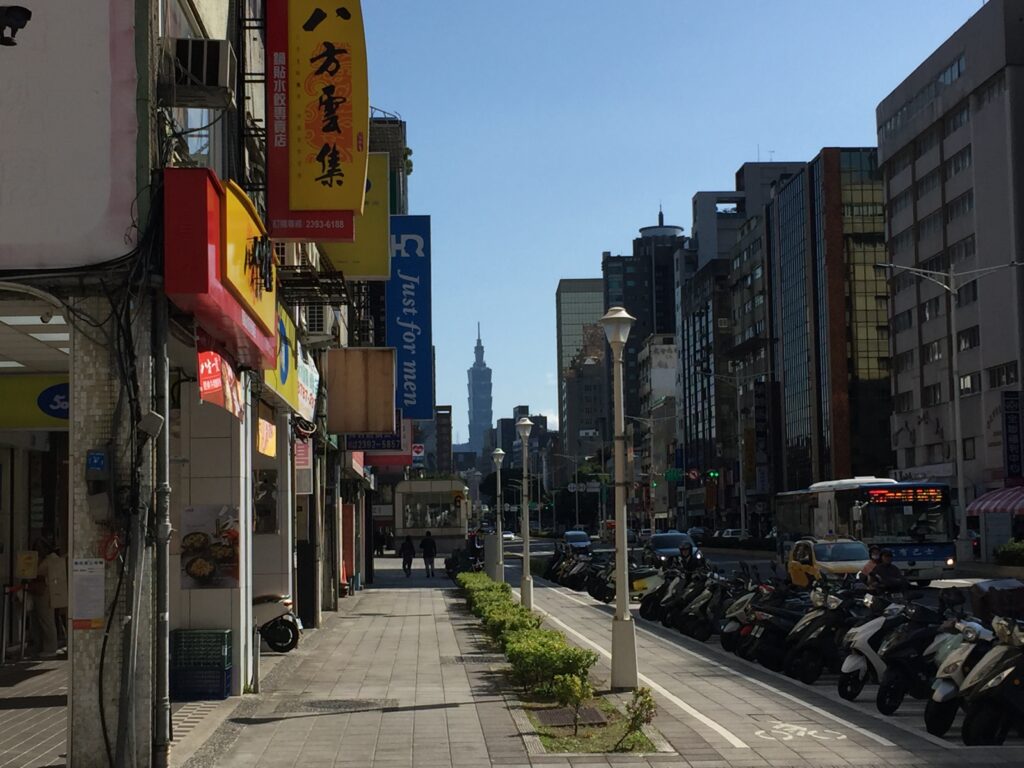
Outside of Europe I travel without a SIM card, so my internet connectivity depends on the vagaries of the free WiFi that’s available. Fortunately, there’s always enough free WiFi to get by, and Google Maps usually works offline as well. As I walked along the wide palm tree lined boulevards of central Taipei I could see the towering Taipei 101 skyscraper glimmering in the distance. Shaped like a pagoda, it was one of the country’s most iconic sights, but Google indicated it was about 5k away, so I decided to postpone it until the following day. Closer by was the Chiang Kai Shek Memorial Hall, so that became my first destination.
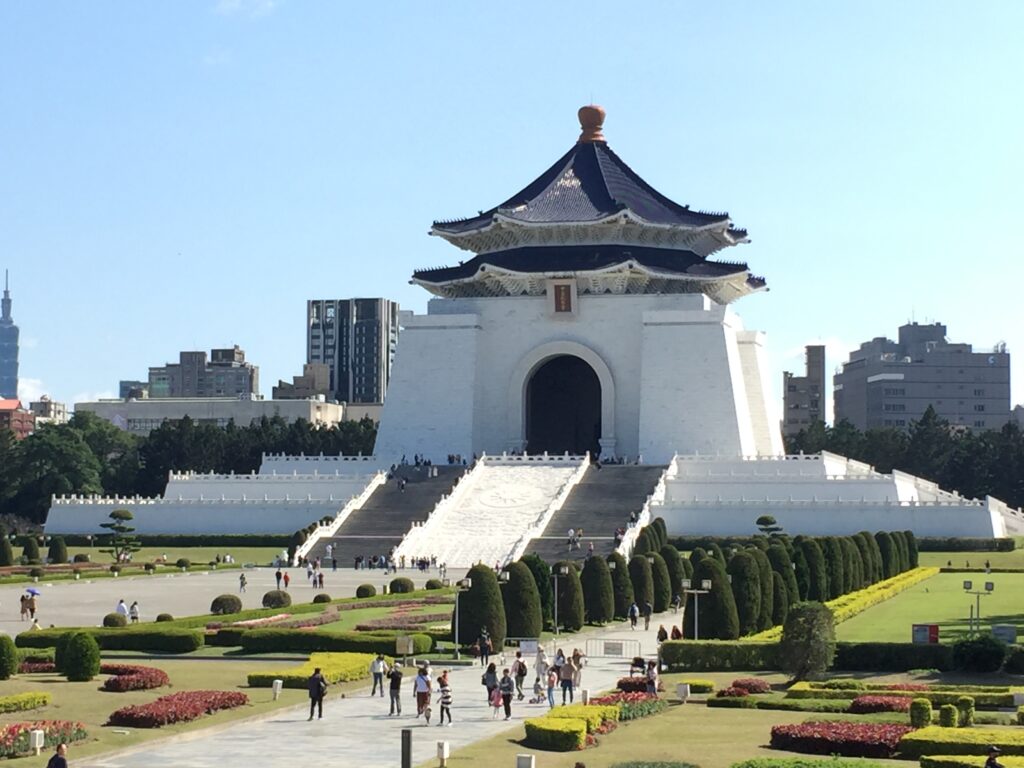
A little bit of history here, very brief and very simplified: Japan took over control of Taiwan from China in 1895. The Qing dynasty in China ended in 1911 following a revolution, and the Republic of China was founded in its place. China and Japan went to war in the 1930s, and Japan was ultimately defeated in 1945. Taiwan reverted to Chinese rule. Internally, within China, a civil war was raging between the nationalists and communists, which the latter ultimately won in 1949. The nationalist government of China, under the rule of Chiang Kai Shek, fled to Taiwan, where he hoped to regroup and take back the mainland from the communists. That never occurred, but he ruled Taiwan from then until his death in 1975. His authoritarian rule was not without it’s share of controversies, but economically the country blossomed in that period. Taiwan transitioned from a military state to a democracy in 1987, which it remains in 2024, although it’s relationship with it’s larger neighbour remains contentious.
Chiang Kai Shek’s Memorial Hall is a massive Chinese styled pavilion, housing a statue of the late dictator. The hall lies at the end of a wide open plaza, which is flanked on either side by the National Theatre and National Concert Hall, both built in the neo-classical Chinese style. The Chinese design was employed to contrast with the destruction of the traditional heritage on the mainland. Wherever you go in this country, the culture and design are unmistakably Chinese, but Taiwanese people are fiercely proud of their own land and its independence, and they want it to remain a sovereign nation as was indicated by the victory of the pro-independence party in the elections that were held a few days before I arrived.
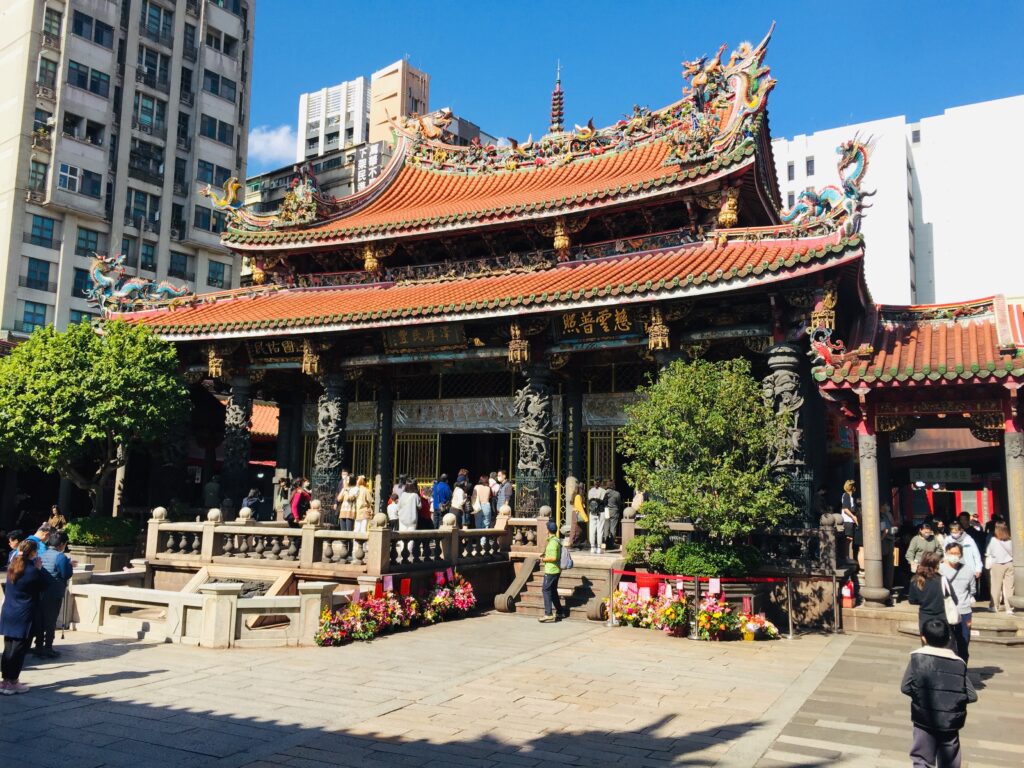
Taiwan is famous for the vast array of colourful temples, which can be located on hills overlooking serene river valleys, or right in the throngs of a bustling metropolis. These temples are a mixture Buddhist, Taoist, Confucian and folk religions oriented towards ancestor worship, but no trip to Taiwan would be complete without visiting a wide selection of these. Regardless of how big or small, the temples are skillfully crafted and ornately decorated in a symphony of reds and golds, with figures of dragons featuring prominently on the gable ends. Inside, worshipers follow a route around various sacred spots, carrying sticks of incense which are deposited in front of golden alters with golden statues of deities. People also leave food offerings at these points. While these temples are respected sacred spaces, worship takes place along side regular socialising, and many people scroll on their phones while their colleagues cast their minds to more divine matters. I spent some time in the beautiful Bangka Lungshan Temple on that morning, and later in the afternoon I visited the equally impressive Boa’on and Confucian Temples in the north of the city, along with some of the more modest local temples that weren’t on the tourist trail. All were free to enter, and provided a charming blend of spirituality, serenity and social vitality, and observing the behaviours and rituals within gave me a few insights into the mindset of the Taiwanese people and culture.
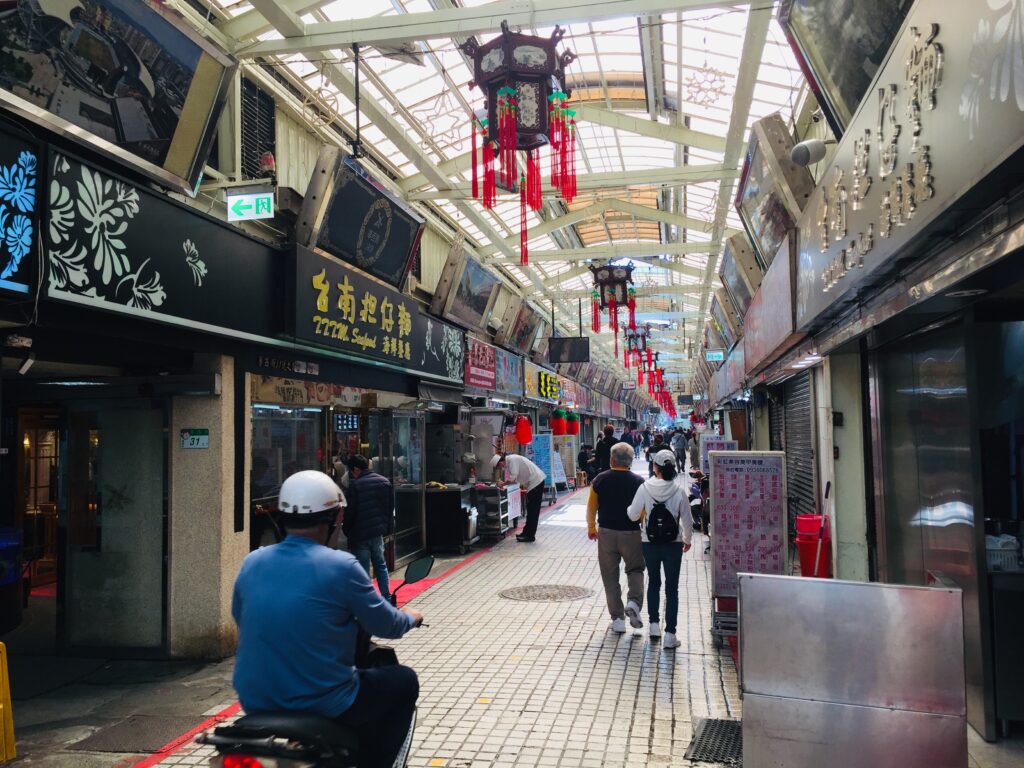
Having already walked a good chunk of the city, taken in a few impressive sights, watched life on the street as it is lived by ordinary people, and even stopping to help an old man who had taken a tumble as he crossed the street, it was time for me to get lunch. There are no shortage of places to eat in Taiwan, especially in the labyrinthine markets and food courts. Queuing is not uncommon, sharing tables likewise, and pointing to foodstuffs when no one speaks English, and hoping what you’ll get will be edible is also par for the course. Becoming proficient with chopsticks is also required. The food is good in Taiwan. Rice and noodles are staples of many dishes. Beef and chicken are usually on the menu, as are many kinds of offal. Don’t look too closely at English translations. Chicken beaks, cows fingers, and otters tails served in Chinese medicine don’t sound as appetising as they might be if better translated. But I never went hungry, whether I could speak the language or not, and in places where I couldn’t there was usually a grandmother at work who would suggest a dish by pointing to it and making sure I was well fed. I often looked out of place, especially given my height, but I was always made to feel welcome wherever I went.
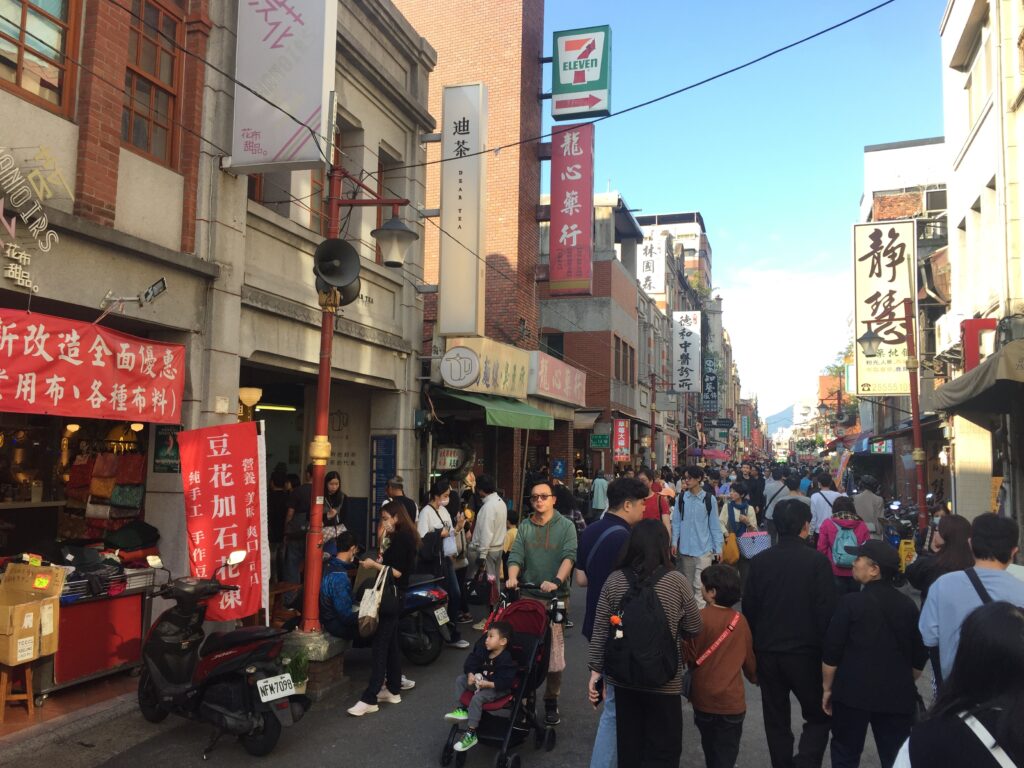
Having taken in a series of temples, walked through the main shopping district with its array of chainstores and coffeeshops, I stumbled upon the charming, gentrified area of Dihua Street. This was an area originally constructed by merchants in the 1850s, and following the Opium War from 1856-60 became a popular spot for western tea merchants to ply their trade. They built beautiful houses and stores, many of which have been restored and now house trendy craft shops and artisan ice cream parlours. Pedestrianised on a Sunday, it was a lively and active place to stroll down on a Sunday afternoon, and get a real taste of Taiwan. It was a nice place to linger for a while, soak up the atmosphere and eat some overpriced if appetising confectionaries.
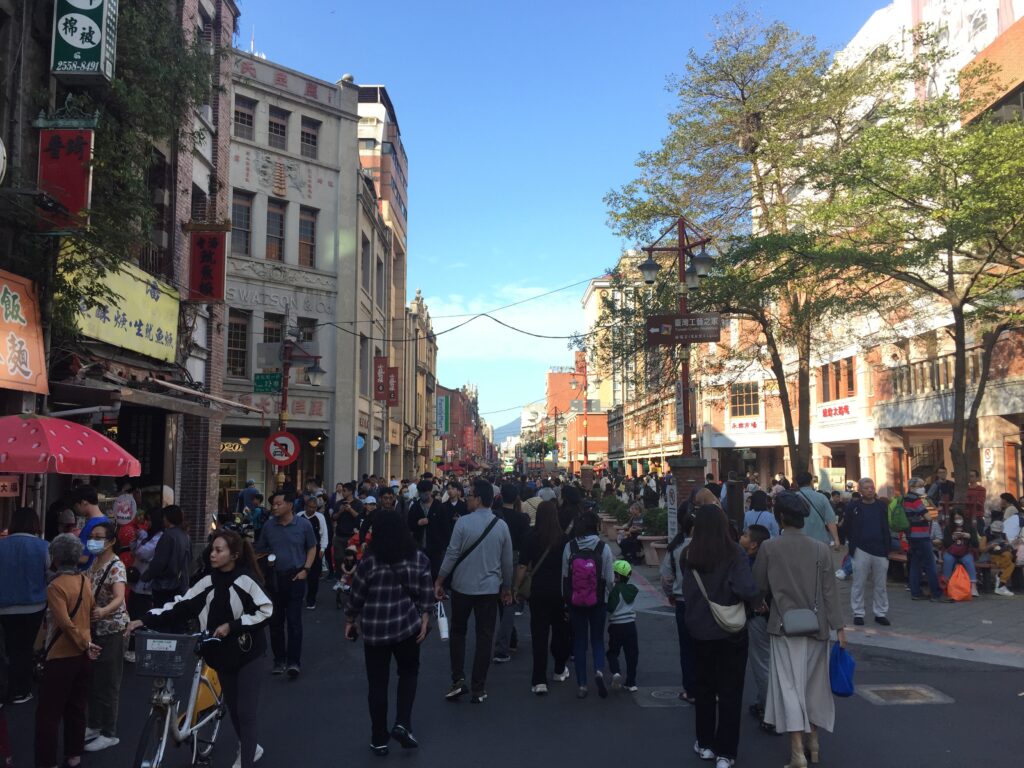
My attitude to museums can be a bit like my attitude to the some vaccines. On balance I think they’re probably good for your health, but on occasion they can produce side effects that can be so overwhelming you’d be better off forgoing it. The National Palace Museum, a building that housed the largest collection of Chinese treasures in the world, was one such place I felt I should visit. It was undoubtedly a trove of some of the most amazing artifacts from that part of the world, each of which was a masterpiece of exquisite craftsmanship. Today was the only day I had to visit, as it was closed the next day and I was leaving Taipei the day after. However, I wasn’t really in the mood to soak up that much heritage that day, regardless of how good it would be for my cultural appreciation. Instead, I opted to visit the Museum of Miniatures. The problem was, it was closing at 6, it was now 4, I was at the other side of town and I planned to get there on foot. I reckoned if I got there by 5:30 I’d have enough time to explore it before it closed.
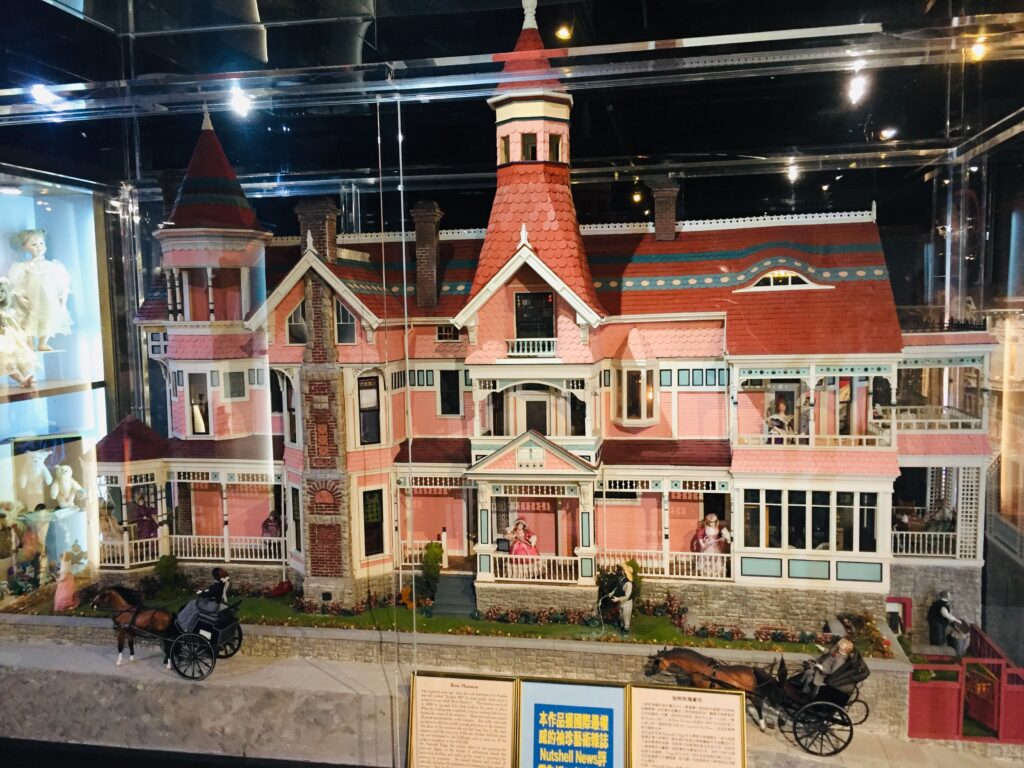
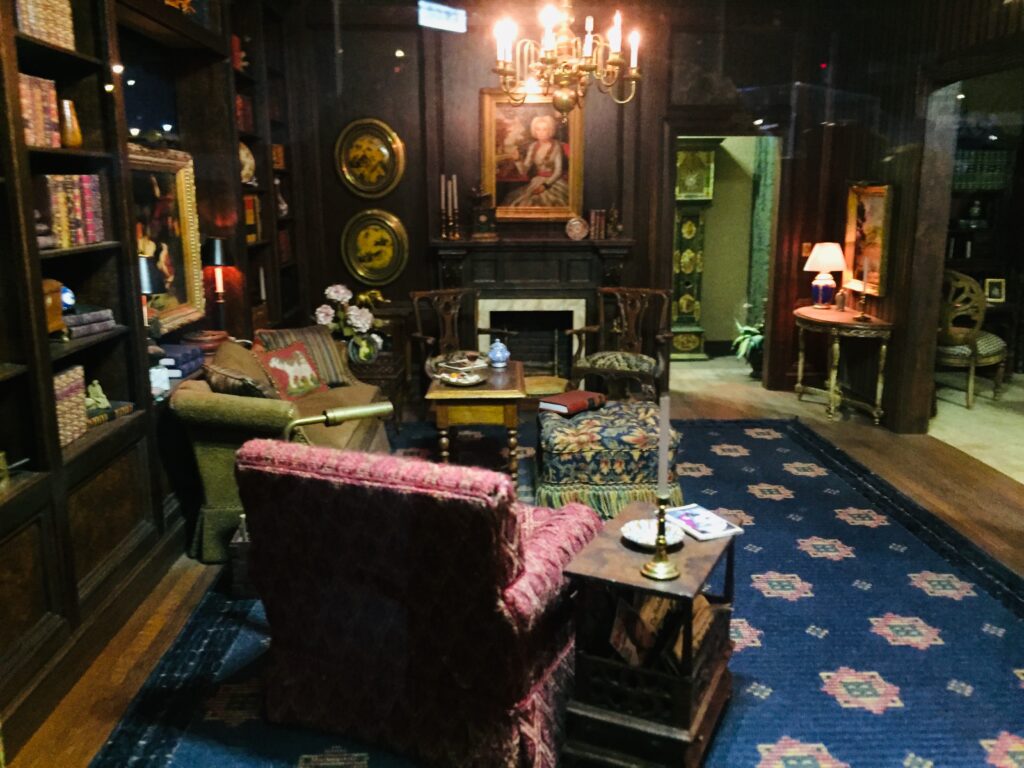
I got there at 5:30 and discovered their last admission was at 5, and they were closed the next day. (Note: many attractions in Asia are closed on Mondays). Like a simp, I pleaded gently with the woman hoping she’d take pity on me. She did, and allowed me to enter, but I had to be done by 6. Housed in the basement of a fairly typical office building, the museum, like the objects of its collection, was small but packed full of houses, palaces, street scenes and dioramas of incredibly intricate detail. 30 minutes was rushed but just about enough time to appreciate the delightful wares of the hugely skilled miniature artists, who crafted historic monuments, classic buildings and traditional domestic scenes with such a loving hand and such precise attention to detail. How the works of these mostly American artists ended up in a museum in Taiwan I do not know, but I do know that it was one of the more memorable places I visited during my time in the capital.
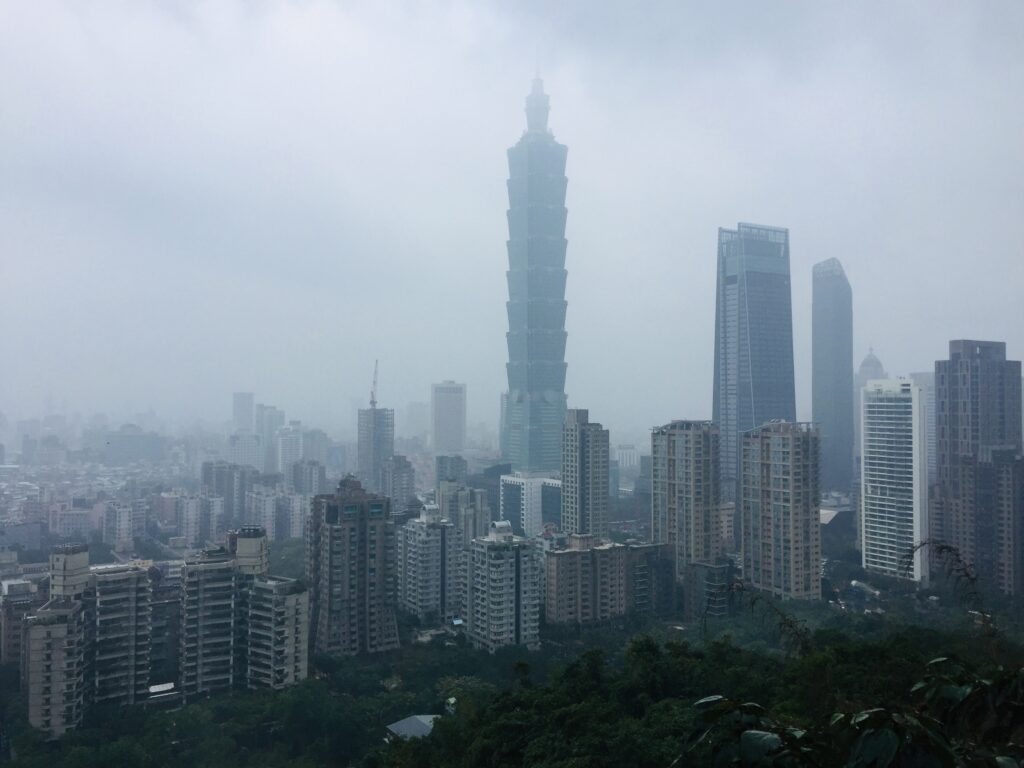
Taiwan is a country of two halves. The western side it predominantly urban, while the east side is more rural. However, despite the urban sprawl of the capital, you’re never more than a short train journey from nature. It was to Elephant Mountain in the east of Taipei that I decided to go on my second full day in the capital. And it was a day that brought with it another Irish summer, in the form of middling temperatures and persistent light rain. Elephant mountain was a hop, skip and a jump from the towering Taipei 101, which I planned to do after my hike, but given the levels of visibility it looked like I’d picked the wrong day to do both.
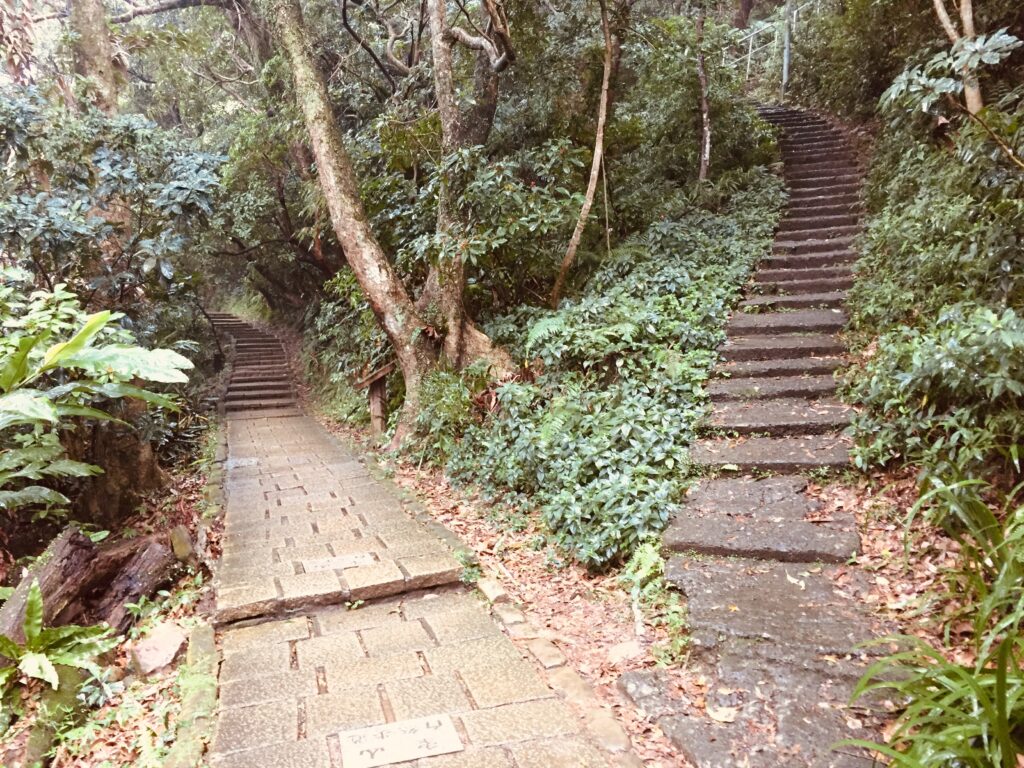
Elephant Mountain was a lovely maze of lush woodlands, with bamboos shooting into the air on both sides of the pathway, and an array of greenery overhead offering a protective canvas for the passersby underneath. Temples and pavilions were scattered throughout the hills, and I stopped at a few to admire the great craftsmanship that went into their creation. The rain persistently made its nagging presence felt, but I had no choice but to soldier on. Views of the surrounding countryside were limited by swathes of mist, and the top of nearby Taipei 101 was obscured by clouds. I hoped things would have cleared by the time I reached it after lunch.
There is no better way to get a sense of a city than to ascend to one of its highest points. Whether that is the Empire State Building in New York, the Eiffel Tower in Paris, or Cork’s beloved Shandon, a good vantage point lets you observe the character and history of the city. You can see the shape and size of a metropolis, its roofs tell a tale of its wealth, prosperity and traditions, while the roads indicate its majesty or its meekness. The basement of Taipei 101 is filled with high end luxury goods stores, mostly selling bags and watches, and all of them oddly devoid of customers. No one ever seemed to be in these shops, apart from staff and security. Dressed like a vagabond as I was after my rain drenched walk in the nearby hills, I wasn’t about to go into any of these shops and buy a €3,000 handbag, given that I already had a sufficiently functional tote bag that was held together with staples and duct tape, and I’m a man and I don’t waste money on that crap. I just came here for the view
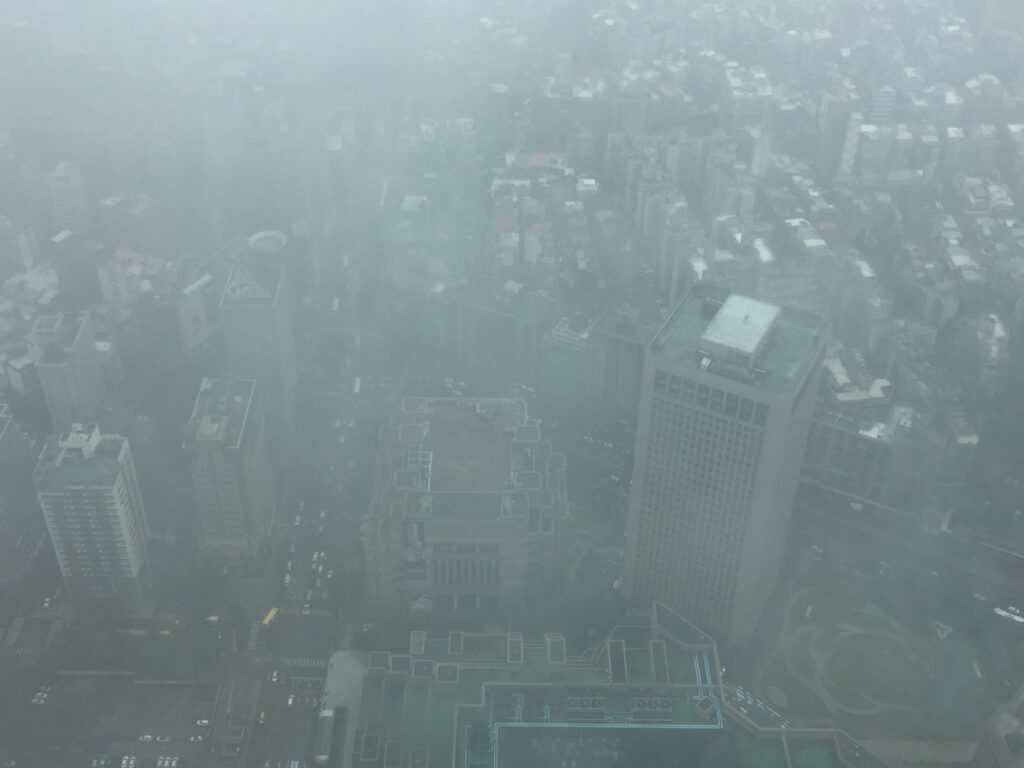
There was a shuttle elevator to the top floor, which propelled us all to the viewing deck at ear popping speed, and the luxurious viewing deck offered a wonderful panorama of… fog. Fog in all directions. The display panel indicated if I looked in this direction I would see a classical Taiwanese village, but all I saw was fog. In another direction I would see Chiang Kai Shek’s memorial, but just more fog. I’d seen the memorial the previous day anyhow. The fog did lift a little, and occasionally a few glimpses of Taipei became visible below. Had I been there the day before I could probably have seen all the way to mainland China. But it wasn’t to be. And sometimes you have to experience some grand attractions in the rain and be grateful, because no matter how lucky you are the sun doesn’t always shine.
CLOCKWISE
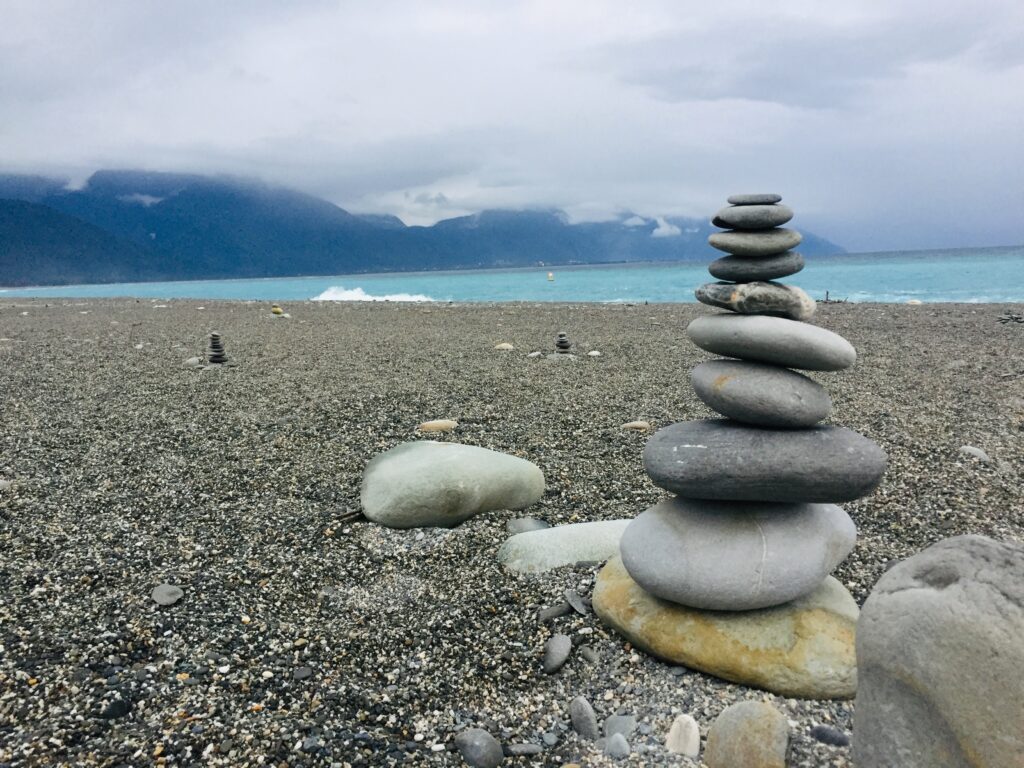
I moved in a clockwise direction around the Island, heading from Taipei the next day to the city of Hualien about two hours away. Taiwanese trains are fast, frequent, efficient and affordable, and on the east coast in particular are incredibly scenic. Once the train had escaped the dreary suburbs of Taipei, it glided through gorges, past rice paddies, and then spent long stretches skirting the Pacific. Hualien itself is a pleasant if nondescript city of about 300,000 people. I stayed in a nice hostel near the train station run by a local man who called himself Brad. While Hualien can be a nice town to amble around, most of its primary attractions are outside the city limits. A healthy walk along a drab busy road brought me to the crescent Qixingtan Beach, a glorious stretch of gritty sands and azure sea, located beneath the rugged coastal mountains nearby. While sea swimming is often prohibited in many Asian countries due to dangerous tides and nasty inhabitants in the water, strolling along by the ocean is one of life’s great pleasures. Though I arrived near dusk on an overcast day, the few minutes of daylight I enjoyed by the sea made the more arduous journey there worthwhile. The tranquility was occasionally interrupted by the sights and sounds of fighter planes taking off from a nearby airbase, a chilling reminder that this country, regardless of its friendliness, beauty and prosperity, is still in the crosshairs of a potential major global conflict.
One of the primary attractions in Hualien, and my main reason for visiting the region, was the Taroko National Park, a long meandering gorge, abundant with flora and fauna, and packed full of hiking trails for hikers of all ages and levels. The buses to the park were a little more complicated. One bus took you to the entrance of the park but no further. I took that one, and left my phone on it, but the bus was still stationary when I realised the phone was missing so I went back and got it without any issue. However, if you wanted to go further into the park, you needed to get a bus at an earlier stop that left five minutes before the first bus arrived. Not the most convenient arrangement. And if you do plan to take public transport in Taiwan, get an Easy Card. It makes life, well, easier.
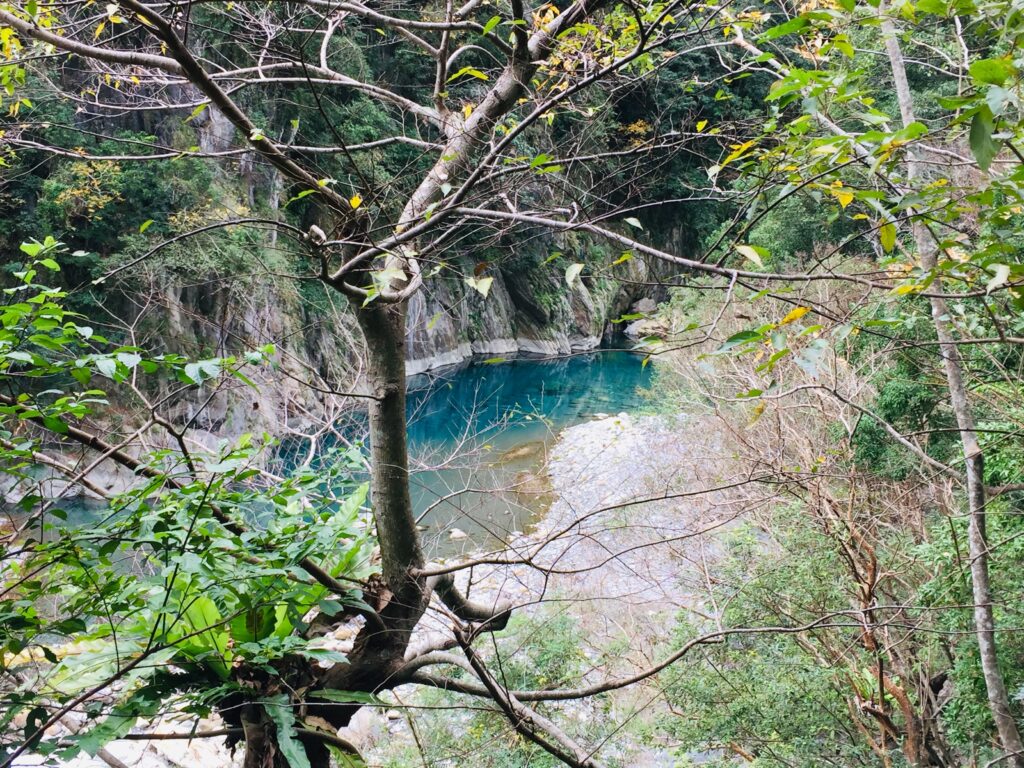
The Shakadang Trail, an short and relatively easy 8k hike along the river was the first trail I opted to do. It cut a path along the gorge, just above the river which was sapphire blue in intensity. I walked in the shade of banyan trees, stopping occasionally to admire the different types of vegetation that were growing all around. The indigenous locals, who were the original inhabitants of Taiwan, and who still resided in Taroko, possessed an extensive knowledge of the plants and animals that lived in the area, and used them strategically for their own advantage and protection. Plants with massive green leaves, which had many practical applications in the construction of shelter, were also used to determine if there were predators in the area, as harmful intruders would trample or eat the leaves. There are so many natural signs and symbols to read in a forest, which are often oblivious to those of us who live in cities. We’re so far removed from nature that we’d have quite a lot of difficulty surviving in a world where there wasn’t a 711 on every street corner.
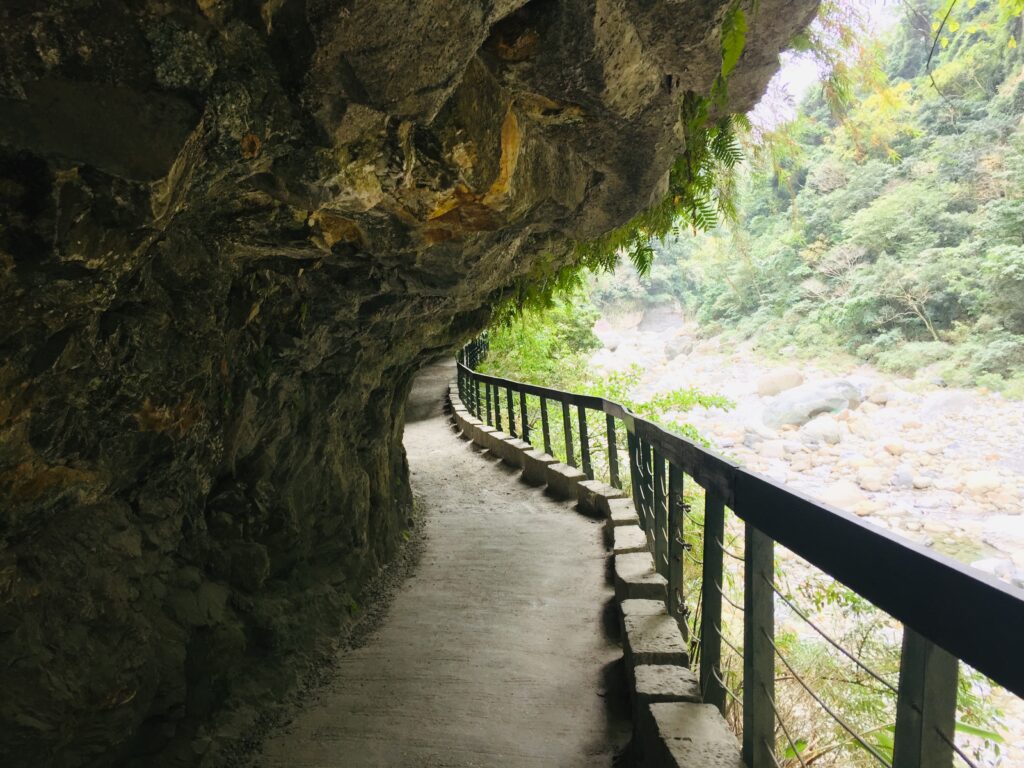
Shakadang was a lovely trail but it was still early by the time I completed it, and given the erratic schedule of the buses I decided to walk further along the main road to reach some of the other attractions on foot. The roads were not the most pedestrian friendly, but there wasn’t a lot of traffic either so that issue was moot. I had to make my way through a long tunnel before emerging into a massive gorge on the other side, which had a beautiful building called the Eternal Springs Shrine perched on a height overlooking it. I had to traverse a long mystical tunnel to enter, but the end point was a serene, dreamlike spot. It had been built to commemorate the lives of 226 men who had died building the nearby roads and tunnels in the 1950s. They were returning soldiers from the war who were put to work developing Taiwan’s infrastructure. It was a fitting monument, but its presence did call to mind the brutal conditions in which so many people worked, and the sacrifices they made to create the facilities we all take for granted. And while we live in a world in which travel is comfortable and convenient, further up the road the erratic hand of nature made its presence felt again.
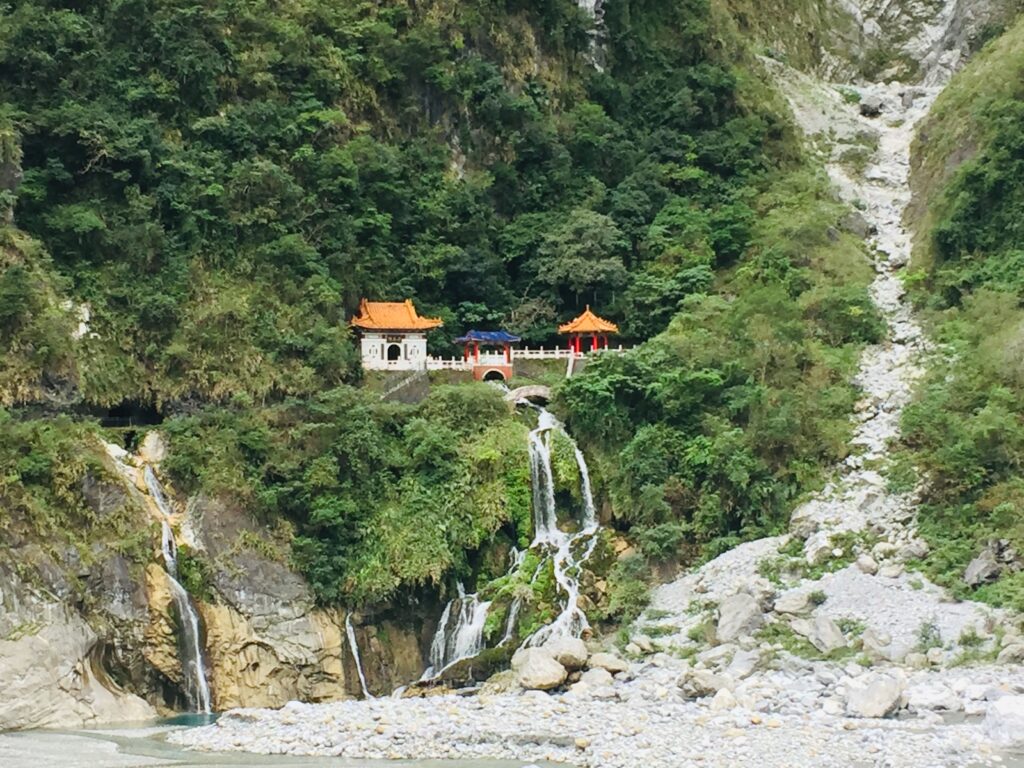
I progressed from the Eternal Springs Shrine along the main road, where I arrived at a tunnel carved through a mountain. The traffic was backed up at the entrance, where a woman with a flag stood like Gandalf, indicating, “You shall not pass!”. The original road around the mountain was still accessible on foot, so I decided to see how far I could get in that direction. As I passed along, some small rocks tumbled down the cliff faces overhead, and landed not too far away from me. I could see in the distance that a bigger landslide had obstructed the road, so no person or vehicle was going to be able to get through that day. As I made my way back down the path I came, the traffic started to build up more and more. There would be no movement for a long time, and the convoy of buses had nowhere to turn around. Perhaps the gods were looking out for me when they made those bus schedules so inconvenient.
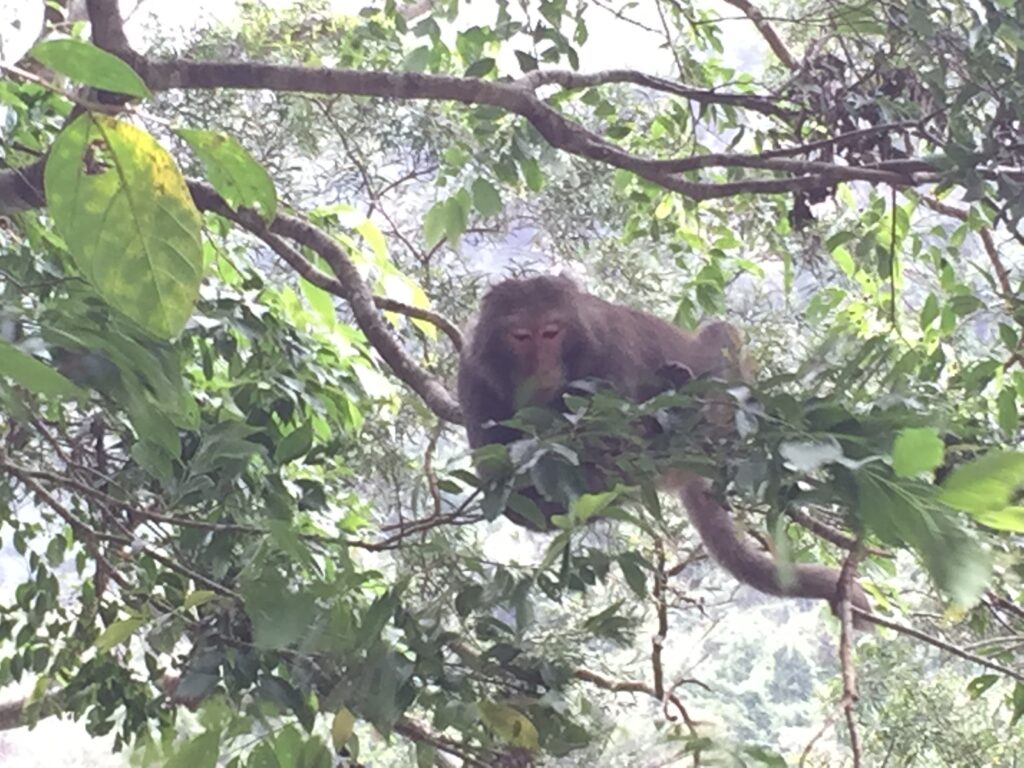
I headed back to the park entrance and undertook the Dekelun Trail nearby. This was a short but very steep climb up the side of a mountain. I walked along the forest trail and watched the colourful butterflies dance and flutter in the warm afternoon sun, while troops of macaques romped about menacingly in the branches overhead. I encountered the occasional other person, but by and large I had the place to myself. I was starting to think that spending January in Asia was quite a good idea.
GREASE
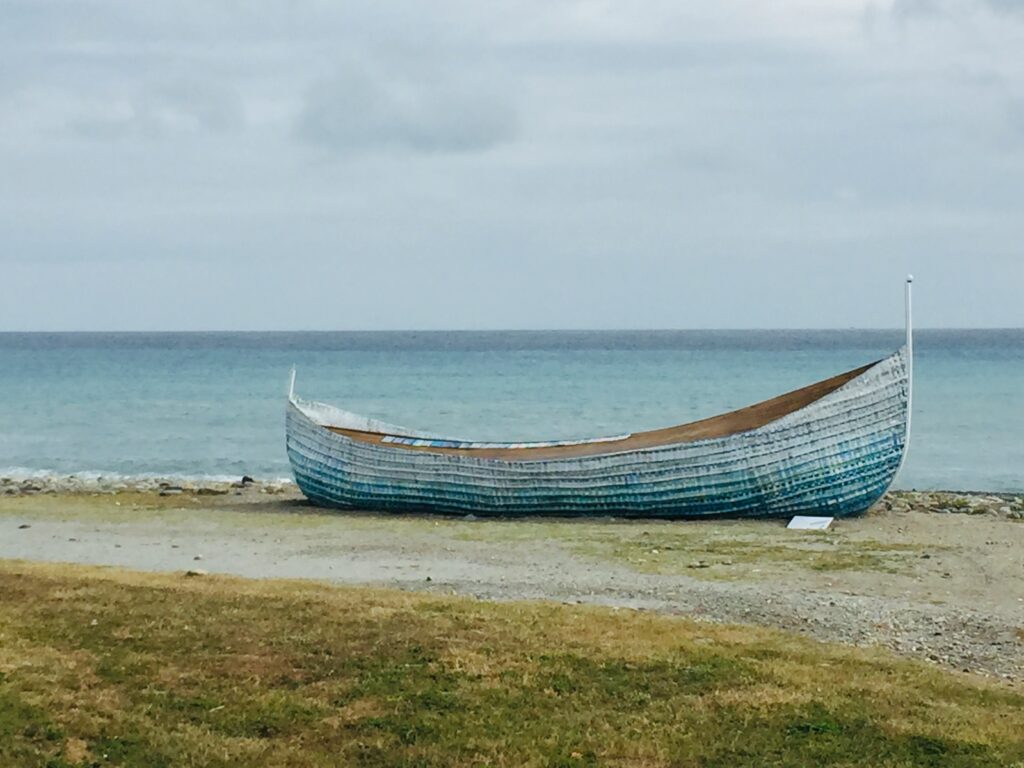
I moved from Hualien to Taitung, another city further down the coast, where I planned to spend one night. Taitung was more of a bridging post between Hualien and the busy metropolis of Kaohsiung, on the southwest tip of the island. Taitung is often just a stop over for people taking a ferry to nearby islands, which, given time constraints, weren’t on my itinerary, and I was concerned that my time in this town would either be wasted or insufficient. I was wrong on both counts. Taitung was a more relaxed and rural city, situated between the mountains to the west and the sea to the east. It had plenty of hustle and bustle, but its hustle was a bit more traditional, its bustle was a little more regional, and it was quirky and inviting in equal measure. I liked this place a lot.
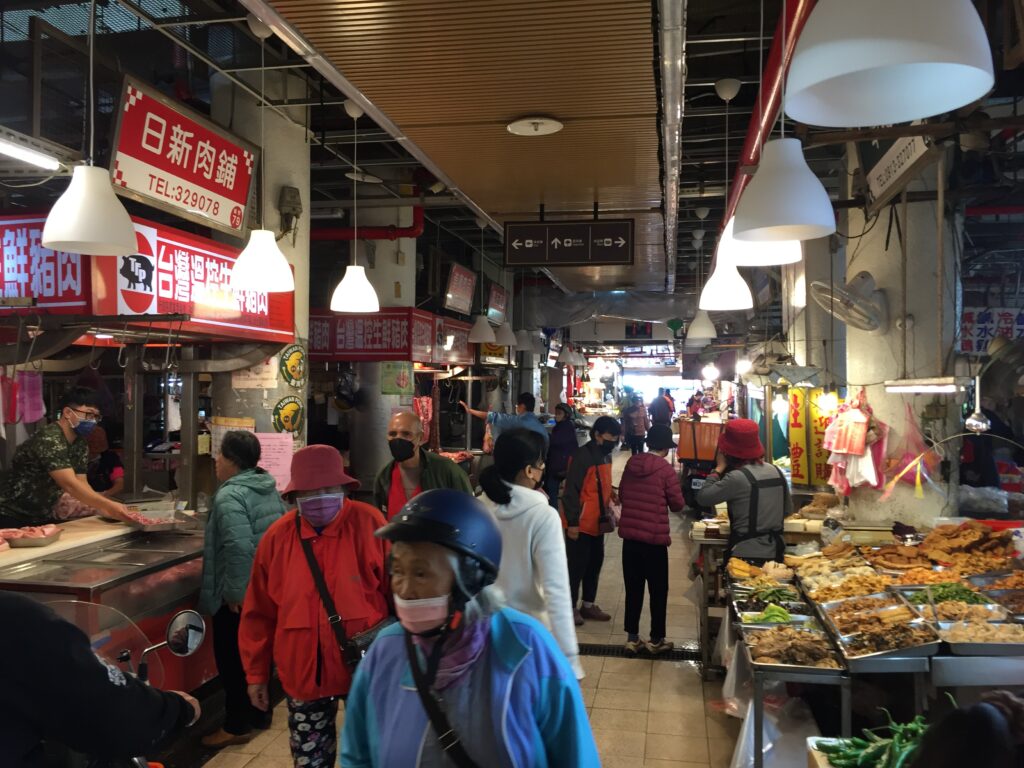
Once again, I stayed in a comfortable hostel in the centre of the town, near the local market where a Chinese smorgasbord of meats, vegetables, fish and other assorted victuals (no pangolins) were on display. These markets, of which there were many in each town, were great places to wander through and get a sense of what real life was like in Taiwan. The centre of Taitung had more lot of mom and pop stores and restaurants than chain stores, and they all had a lot of charm to them as well. On the recommendation of the hostel owner I sampled one of the city’s famed fried chicken restaurants for lunch. A good feed of grease was just what I needed in contrast to all the rice, noddles and 711 rubbish I was consuming. She also suggested I rent a bike and follow a prescribed route from the beach though the city’s parks, along its river valley and canals, past rice paddies and through a repurposed railway station before returning to the Pacific coast at the end. That trail sounded like it would be well worth the $100 (€3) it cost me to rent the bike for the afternoon.
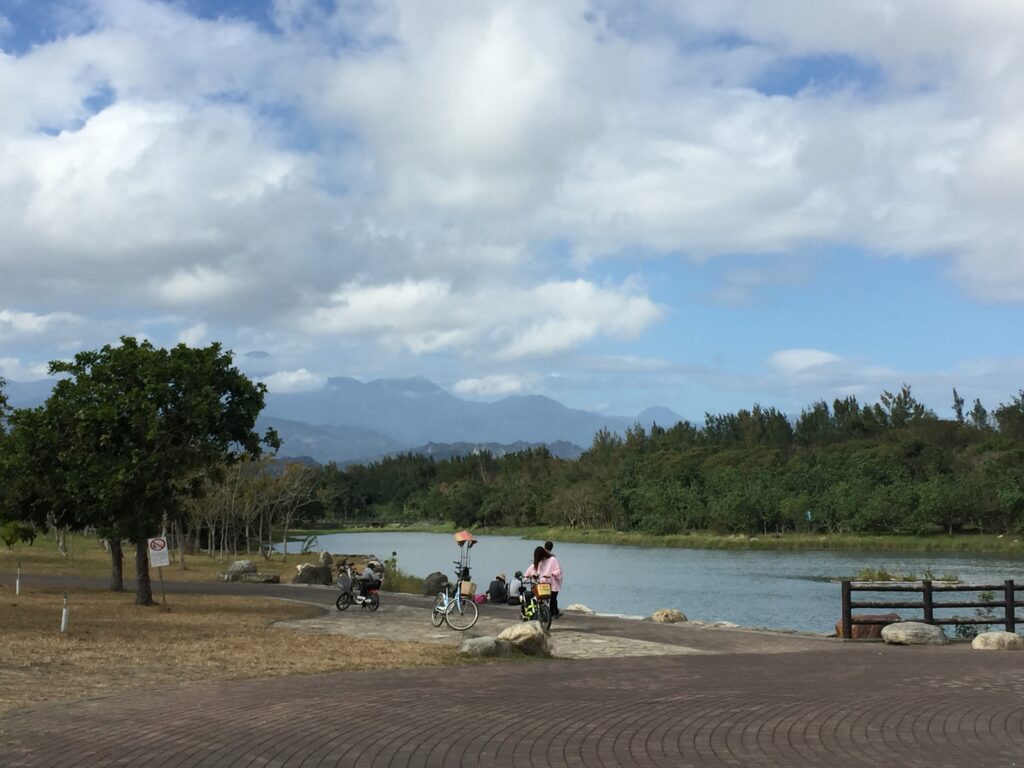
Taitung was for me the most surprising treasure of Taiwan. The bike ride around the city allowed me to explore some of the area’s hidden beauty spots, and the concluding part of the journey, along an old railway track and through a station that has now been turned into a craft market and public park was a pleasing way to end the journey. Taiwan experienced massive modernisation in the latter half of the 20th century, making the country one of the economic tigers of Asia, and saw their cities expand outward and upward. but the repurposed old railway station showed that they could preserve their heritage and give it new life while embracing the allure of progress at the same time.
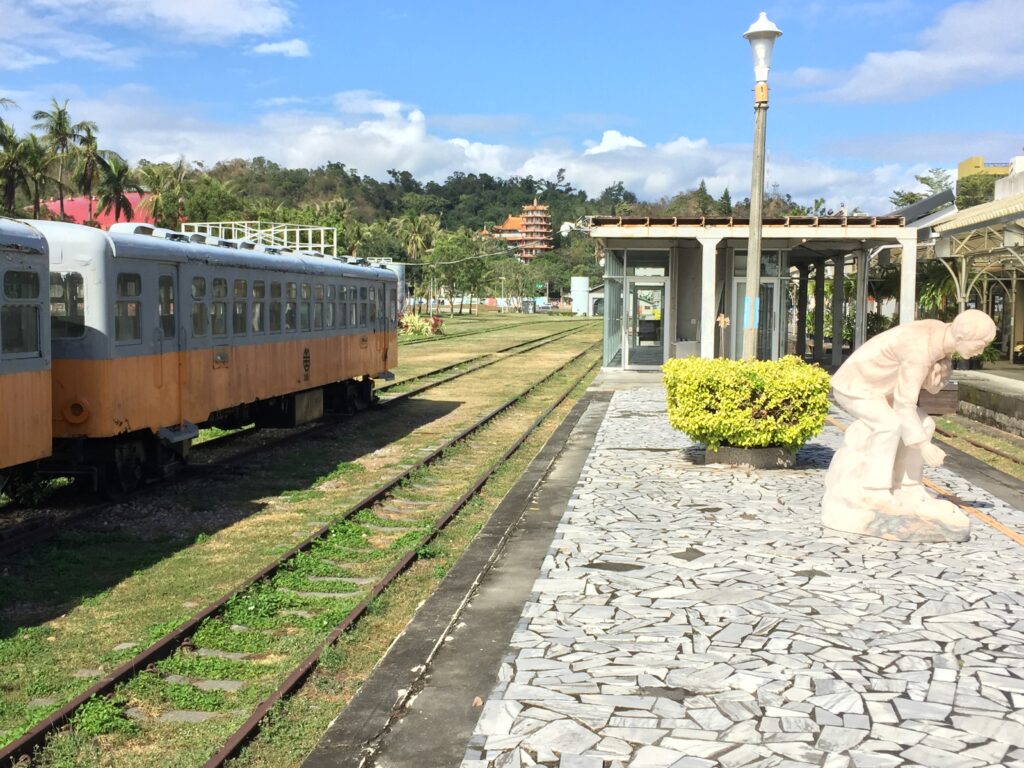
In spite of the occasional fighter jet flying by at supersonic speed, the stay in Taitung was serene and refreshing. The next day I would leave the east coast and head to the west. After another glorious ride along the deep blue pacific coast, the train cut inland through the dense interior jungles, and emerged into the busy built up suburban sprawl on the other side. My destination that day was Kaohsiung, Taiwan’s second largest city, an inviting metropolis on the coast that offered plenty of adventure and glorious sunshine. Getting sunburnt in January is a rarity for those of us from northern Europe, but here in southern Taiwan it was like summertime.
SUNSET BOULEVARD
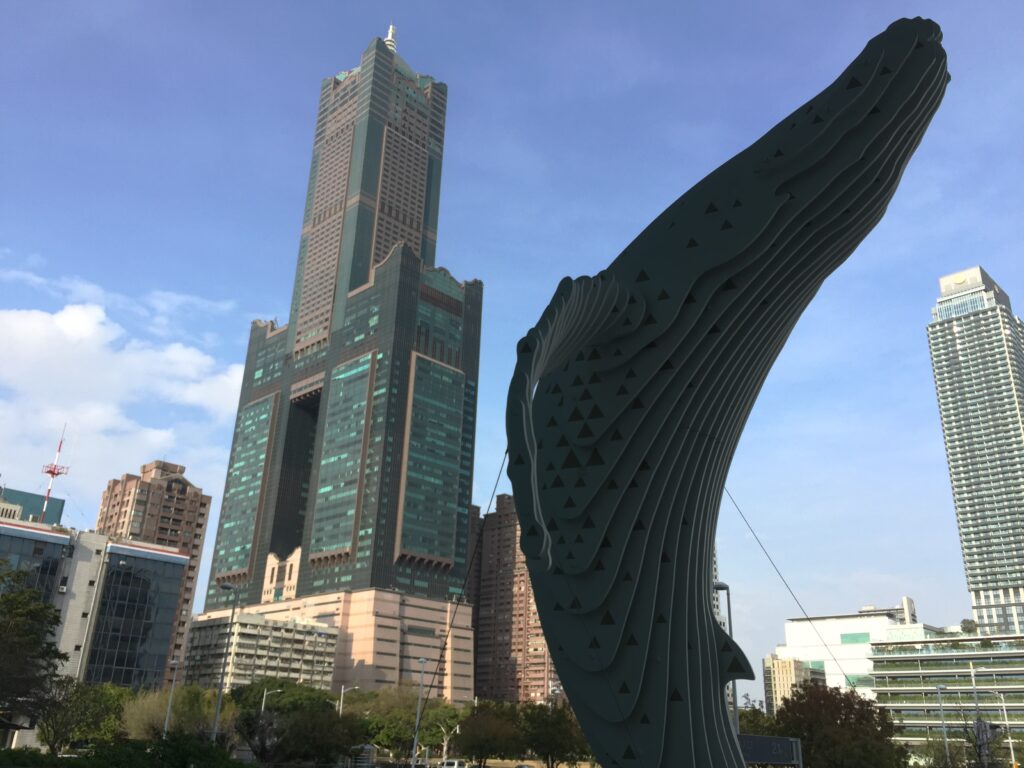
Kaohsiung is an attractive port city, which in past times was the administrative centre for the Chinese Qing dynasty (1644-1911), and later the Japanese, who controlled Taiwan from the end of the 19th Century until after the war. It was a major industrial and export centre in the past, centering on products like sugar and bananas, but now its old docklands and railways have been converted into cafes and parks for people to enjoy in the “winter” sunshine. Many of the city’s main attractions are located around the port, a short walk from the busy centre. Whimsically designed conference and music centres are built along the waterfront, while further along is the Pier 2 Art District, a series of old ware houses which have been turned into an array of appealing but often pricy cafes and craft shops.
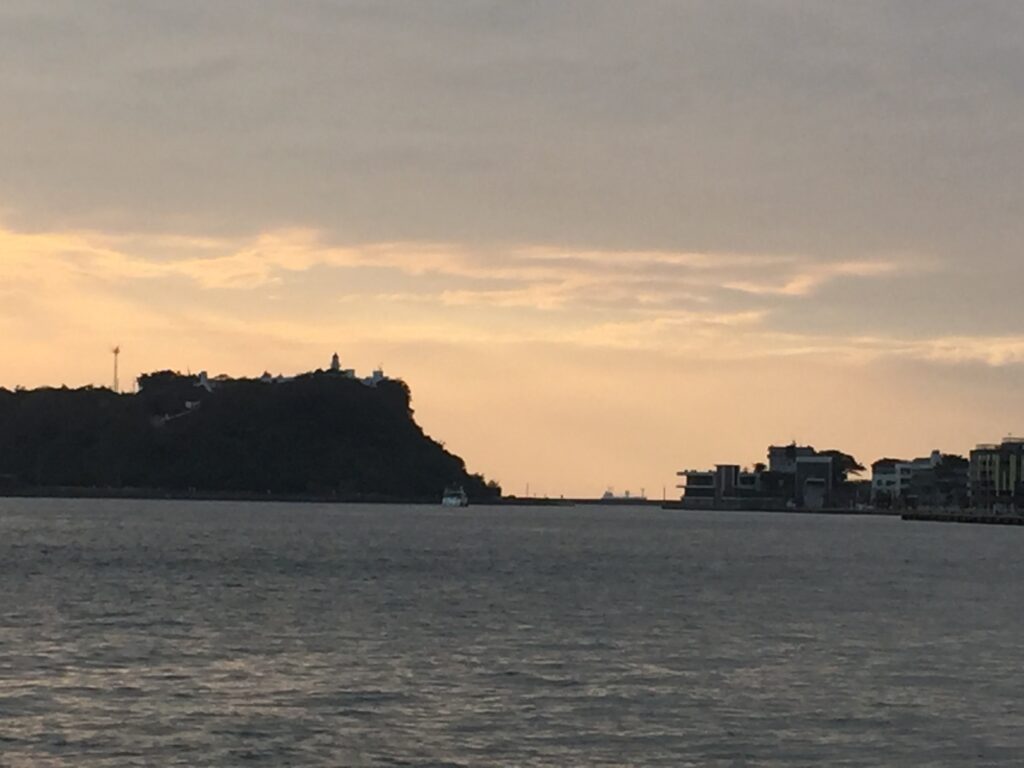
The city’s large harbour is sheltered on one side by the pretty Cijin Island, whose lighthouse greets all visiting ships. Across the mouth are the remains of an old fortress, which offered the city’s sentries a good vantage point from which to see any potential invaders in past times (and maybe again in the future). For now it was one of the best spots to view the most glorious sunsets imaginable. Hundreds of people gathered along this part every evening to watch blazing sun set behind the tranquil waters of the pacific. I stopped for a while to glance at the fading rays of the sun, which turned the sky blood red and made silhouettes of the palm trees that lined the ocean. For those brief moments I felt like I was in paradise.
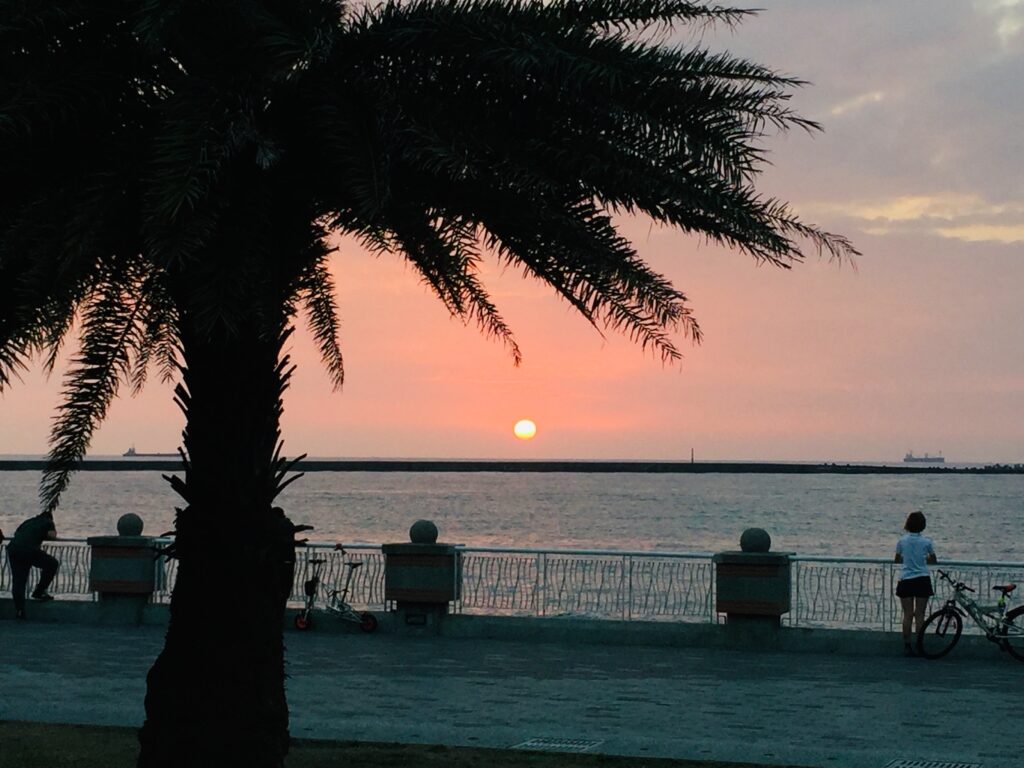
Heading back inland from the coast once night had fallen, I went in search of somewhere to eat. One of Taiwan’s great attractions is its night markets, where small traders offer a broad and enticing variety of different types of food products, often accompanied by dubious English translations. I had experienced the joys of these places in the other cities I’d visited on this trip too, yet each city had its own specialities and delicacies, and it was often a good idea to buy a mixture of different items from a variety stalls. Prices were always very attractive, not that many things are expensive in Taiwan for Europeans. I opted for a big bowl of pork stew with mushrooms and noodles at one stand, while at another I enjoyed the Taiwanese equivalent of black pudding, a tasty and spicy delicacy, but possible best not to look too closely at the ingredients. I finished off at Jen’s Egg Waffles, a stand which did exactly what it said on the tin, run by a very nice lady who had a friendly welcome for those of us from out of town. Be sure to visit her stall if you happen to be in Kaohsiung.
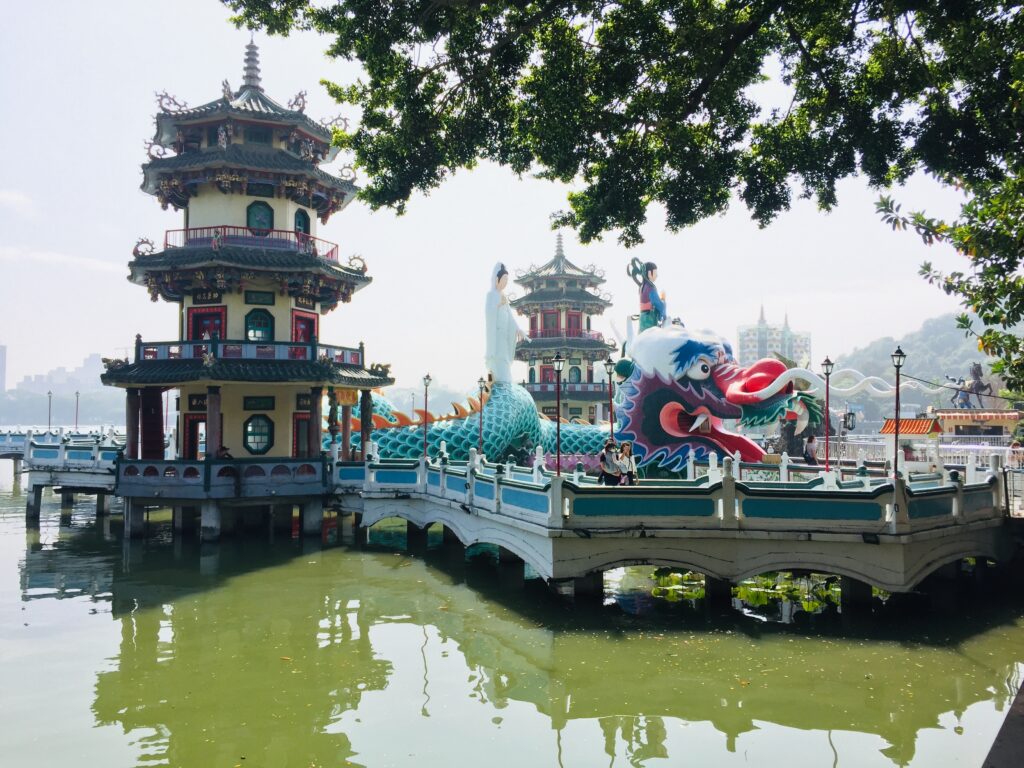
North of the city is the enticingly named Lotus Pond, which was my main destination the next morning. Temperatures were in the mid twenties, and the blazing sun turned my pasty skin a bright red. And it was only the 20th of January. To say you’re taking a trip to Lotus Pond may have more than one meaning. It is a tranquil lake surrounded on all sides by an assortment of temples, pavilions and pagodas so colourful and gaudy it could be mistaken for a type of religious theme park. And such is the variety of colours and fantastical creatures floating about, you could be forgiven for thinking you were on a psychedelic trip too. Perhaps the mushrooms I’d eaten for last nights’s dinner were of a more magical kind than I’d bargained for.
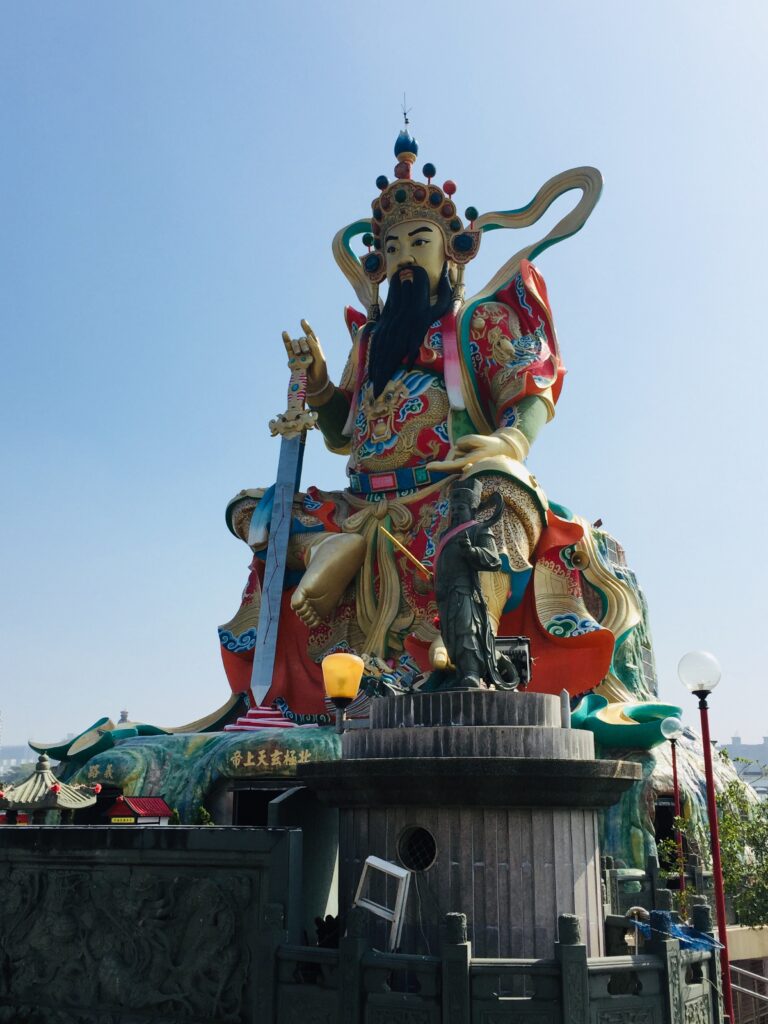
Figures of tigers and dragons abounded, none of them crouching or hidden. Massive statues of ancestral figures towered over the lake, appearing both protective and threatening towards their worshipers. To enter the Taoist Spring and Autumn Pavilions you needed to walk through a tunnel in the shape of a dragon – a wonderful, mysterious, garish path that looked like it would have been created by Dali if he had been Taiwanese. Something strange must have been in the water here. Lotus Pond was mesmerising, but as an alternative to the sensory overkill I needed a to go somewhere much calmer to come down afterwards.
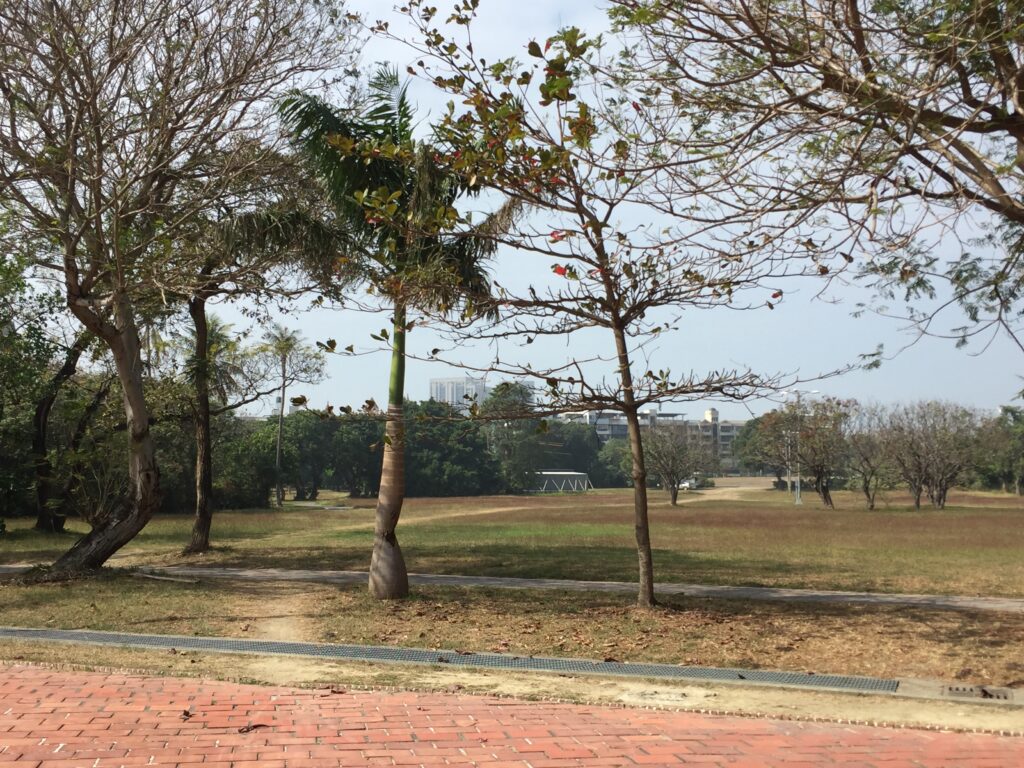
Fortunately there were some parks nearby that offered some tranquil walks and trails that provided just that. I wandered along a surviving portion of the old city wall that bordered a park, which was oddly empty for a bright Saturday morning. The long grassy fields were full of spring flowers, baroque banyan trees, and dancing butterflies. It was as enticing a recreational spot as you could find in any city. I lingered there for a while, enjoying the tranquility and the early afternoon sun before heading on to have lunch in the Guomao Community, a curious district that was built for the former Chinese soldiers. Given the stares I received, I suspect I was the first Irish person to ever visit that neighbourhood.
The intense afternoon sun was a bit challenging as I embarked on a lengthy stroll along the expansive boulevards of Kaohsiung’s wealthy neighbourhoods until I arrived at the Museum of Fine Arts, which featured displays by renowned Taiwanese artists. I’m never quite sure if I get the point of most modern art. That might be the point of it. Often the buildings housing the exhibits can be as interesting as the art works themselves, and that was true of this one, which was laid out like Escher’s Impossible Staircase. Modern art museums are rarely dull to visit, even if their wares can often be baffling, infuriating and indecipherable. Sometimes, like that hot winter’s day, the air conditioning is one of the most welcome features of such a place. Other days you could be forgiven for thinking the air conditioning is part of the exhibition.
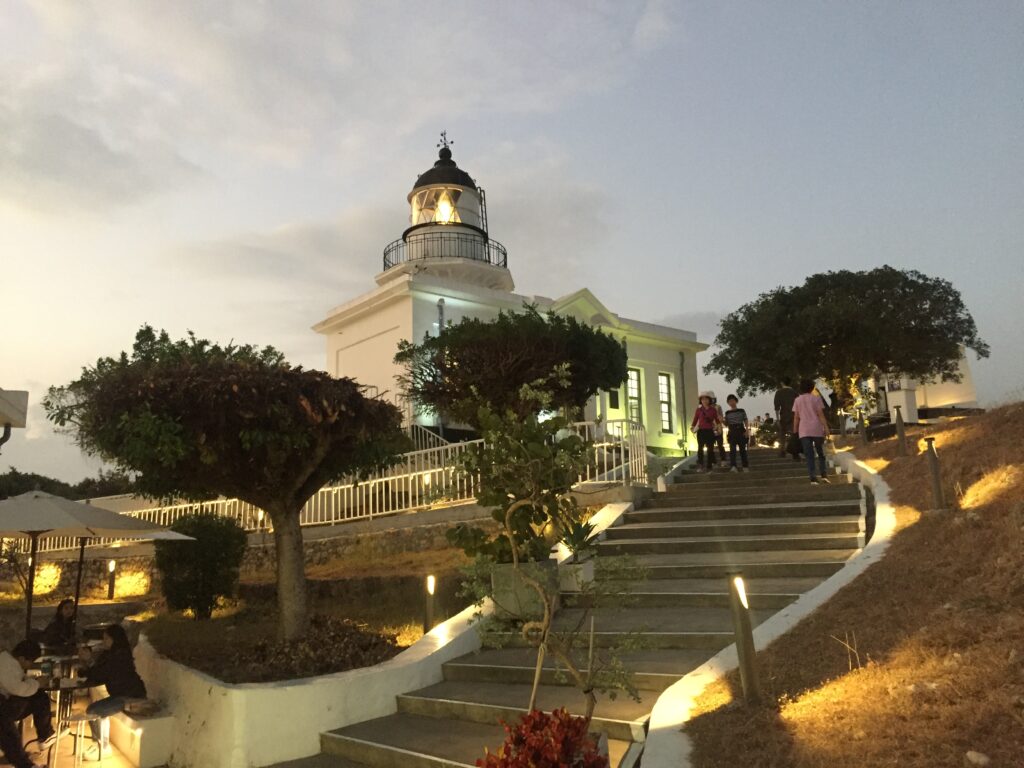
Kaohsiung has undergone a lot of urban regeneration in recent decades, and the construction of a light rail which has been networked through tunnels of trees a great example of how modernisation can be beautifully integrated into a natural landscape. I rode the tram from the museum as far as the old railway yard, another space that has been converted into a park, and from there I took the ferry across to Cijin Island, where I caught a few more glimpses of the sunset before cloud cover spoiled the show. In the dying embers of the evening sunshine I strolled up to the lighthouse at the entrance to the harbour, and admired the magnificent expanse of water and the city of twinkling lights it served. Kaohsiung’s energy was infectious, and I was sorry to be leaving this exciting city after a charming two day stay. But I was headed for Tainan, the birthplace of Taiwan.
BIRTH OF A NATION
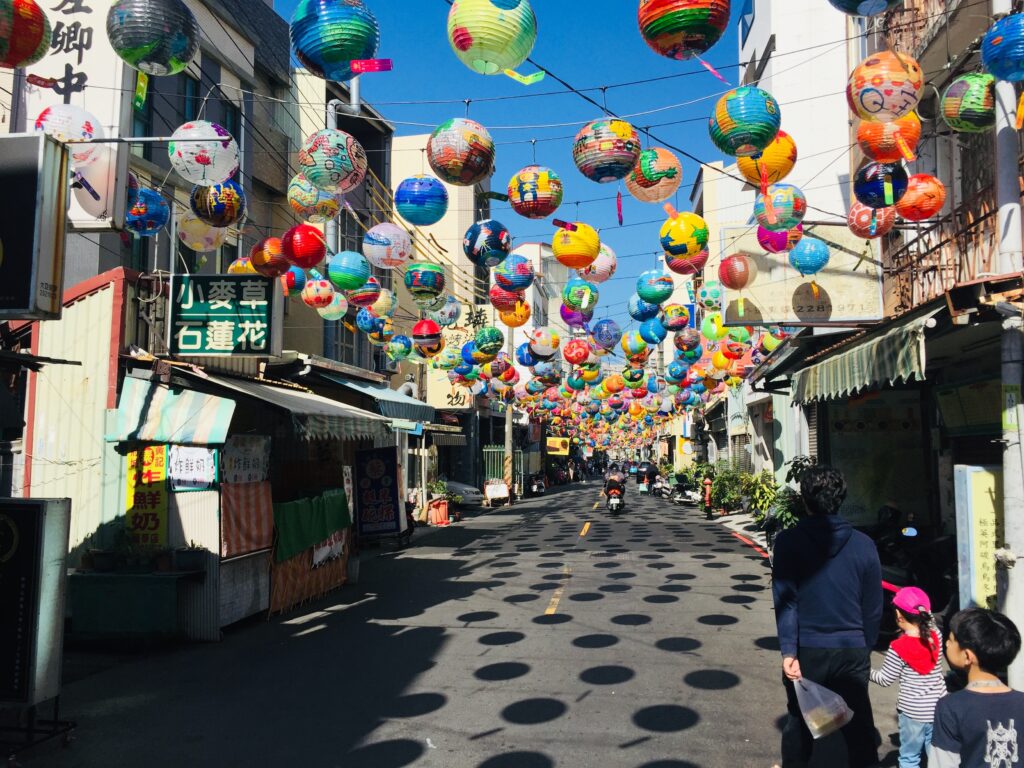
The west coast of Taiwan, from Kaohsiung in the south, to Taipei in the north, appears to be one uninterrupted conurbation. The train journey from Kaohsiung to Tainan, my next destination, was so short I could have walked. Tainan was only about about 40 km away, but it could have been a different world. Modern day Taiwan had its origins in this city in the 16th Century when Chinese settlers established bases and trading stations there, and then the Dutch arrived in the 1620s and built a fortress in the district of Anping, which is partially still standing. Modern Tainan had lots of beautiful features, many magnificent temples, intriguing markets, very friendly people, and tonnes of history. I tried to see as many of the sights as I could cram in over a two day period. There were Confucian temples, Buddhist Temples, temples devoted the city administrators, and some devoted to the fires of hell. All were resplendent examples of craftsmanship and design, but I was also reaching a point in my travels where my brain was becoming supersaturated with history and temples, and I was starting to forget which temples I’d visited almost as soon as I’d left them. I needed a change of scenery.
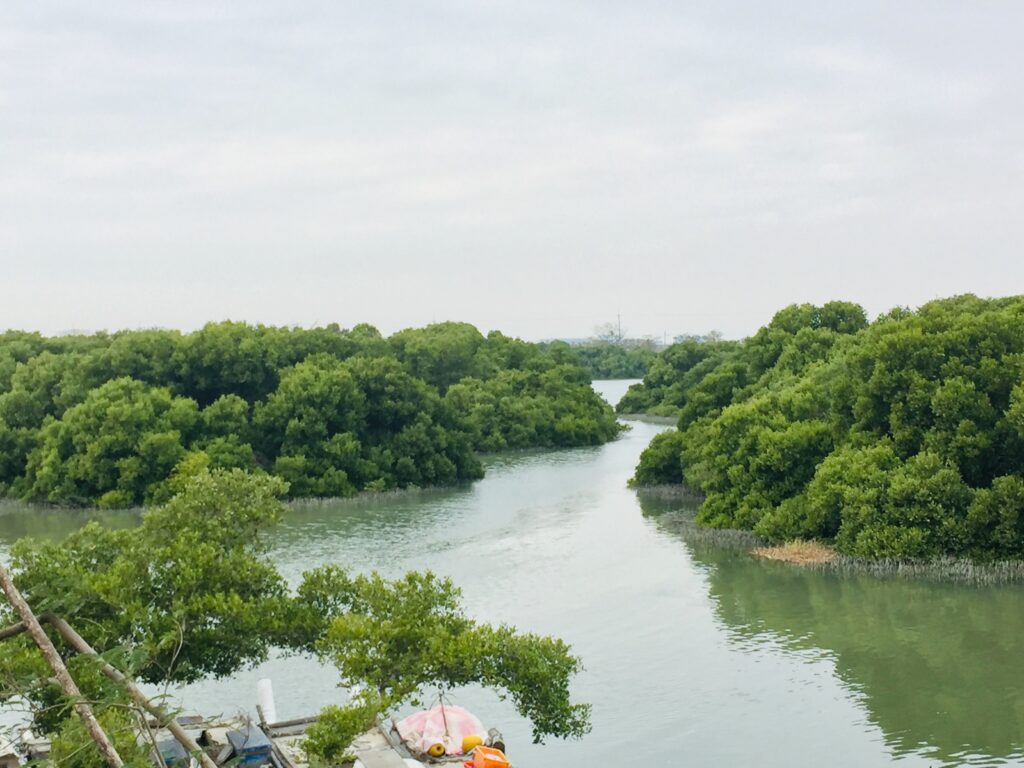
An excursion on foot to the Taijang National Park north of the city, where I walked along quiet pathways through the wetlands, sandbanks and mangroves, was the perfect tonic for the soul. A diverse and eclectic range of birds fluttered about in search of their evening meal. I had most of this parkland to myself and I wandered about for a few hours until daylight started to fade, then headed back towards the city which was now a considerable walk away. I took a stroll along a nearby beach, which on a clear day provided a great vantage point for watching the sunset, but clouds got in the way that day. Fatigue was starting to catch up with me as well so I decided to catch a bus back to the city. There was a stop for the No. 99, which seemed to be heading in my direction, but the instructions were in Chinese so I wasn’t sure if or when the bus would come. After waiting until what I thought was the next arrival time had passed, I decided to move on towards the next stop and hoped a bus would arrive when I was there. Again, no luck. I sensed the Chinese writing might have been saying the No. 99 didn’t stop on Mondays, but I could have been wrong. Either way, there was no sign of it. The No. 2 passed a few times, and I found a stop for it shortly afterwards. I had no idea where it was going, but when it did arrive I decided to embark and hope for the best. It turned out it stopped right around the corner from my hostel, so Lady Luck was on my side. She must have been one of the Gods whose temple I had visited in the preceding days.
A PLACE IN THE SUN
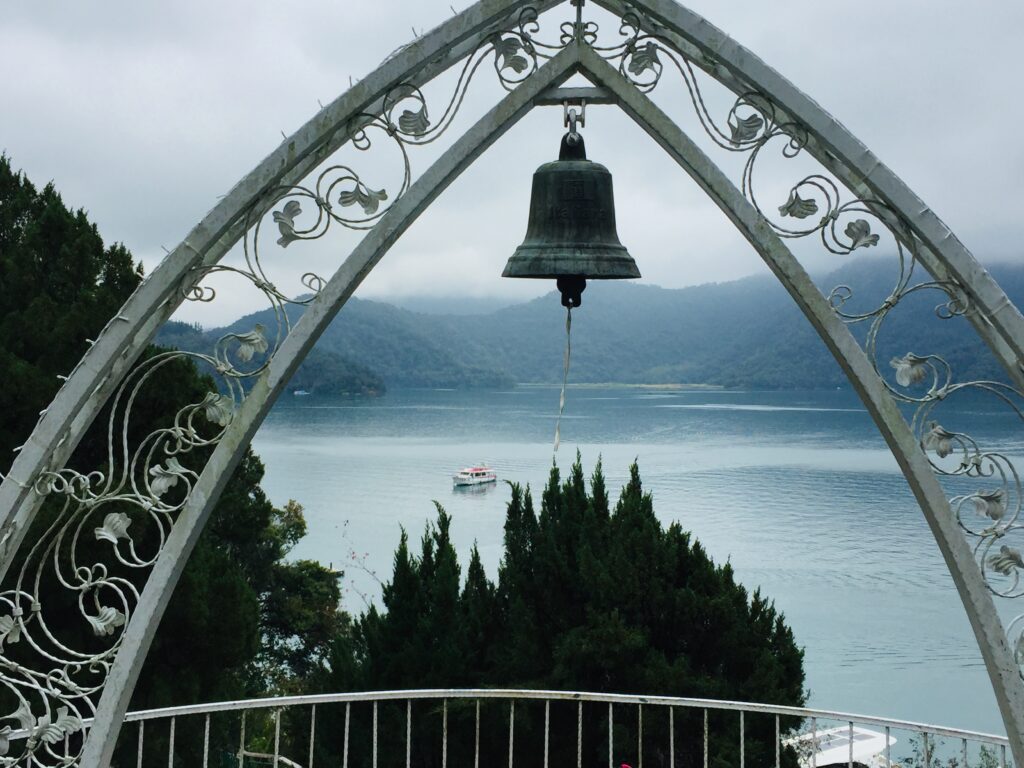
The industrial city of Taichung, a perfectly serviceable metropolis that was part of the greater west coast conurbation was the last stop on my island tour, and my principle reason for going here was to use it as a base to visit the nearby Sun Moon Lake. Situated at an altitude of over 700 metres, the lake is the largest inland body of water in the country. Home to the indigenous Thao people, and still a very important centre of traditional life on the island, it has become very popular with tourists, especially the Chinese ones who come to Taiwan to savour the country’s treasures and not invade the place. At least not yet anyway. The weather had turned a little more Irish in the days since the I’d experienced scorching Mediterranean sunshine in the south, so at the lake I saw neither the Sun nor the Moon, just a lot of fog, but the mist and soft rain enhanced the natural colours of this stunning place. Whatever the weather, Sun Moon Lake was a jewel to behold.
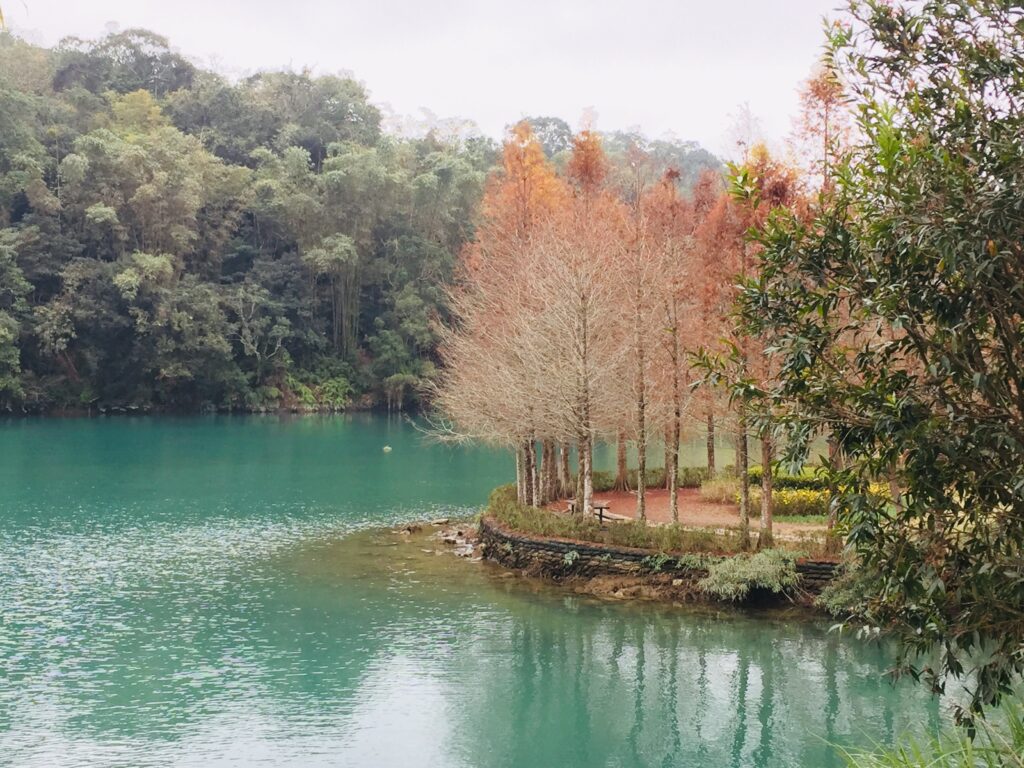
Located about an hour and a half by bus from Taichung, Sun Moon Lake’s natural beauty has been well preserved by modern Taiwan administrations, though some of its natural features have been augmented to generate hydroelectric power. An uber-scenic pathway has been fashioned around the perimeter for cyclists and pedestrians to enjoy, and being a martyr for walking I decided to set off on foot from the town of Shuishe and soak up the pleasures of this inland sea in the mountains. The bright turquoise waters of the lake are surrounded by bamboo trees shooting up to the skies and ferns swooping gently down to the water’s edge. At the beginning of the my walk I visited Chiang Kai Shek’s personal church. The lake was one of his retreats. Nearby was the apricot garden, which in Chinese is a euphemism for academia, the plum gardens, and a pavilion which featured an interesting saying from Confucius – the benevolent love mountains, the wise love water. What was the word for those who love both?
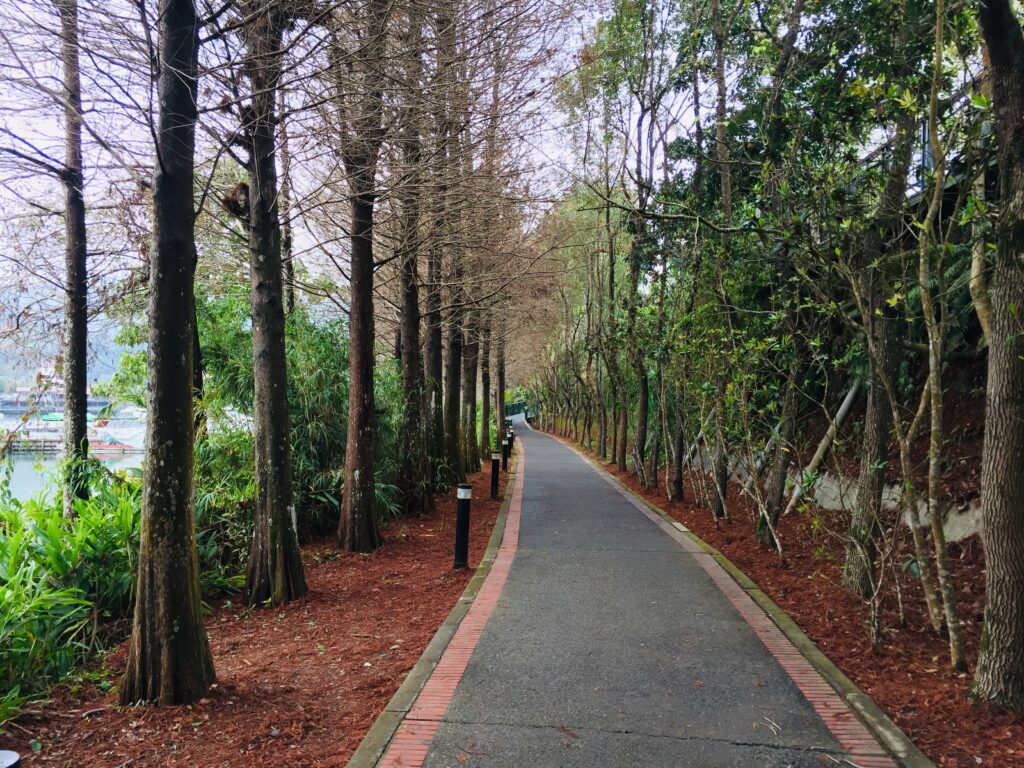
I strolled on for about an hour when I realised that circumnavigating the lake’s 29 KM perimeter on foot was more than I was likely to accomplish in a day, so I decided to hire a bike for two hours at a cast of $100 per hour. It had become a lot more misty by then, so views of the lake were becoming more restricted, but cycling along pathways under a canopy of trees and vines was blissful. I zipped along at a tidy pace, conscious that I only had the bike for two hours. That meant I didn’t have time to stop in the temples that surrounded the pond, but given that I’d overdosed on temples in Tainan I was okay with that. The path diverged from the lake to the road, where for several kilometres it zigged and zagged through dense, rich forests and was mercifully free of traffic. I passed through the busy lakeside town of Ita, and then returned to a track around the lake that sometimes looped back on itself, other times returned to the road, and on a few occasions the path turned into steps where I had to carry the bike for a time. Lucky I was fit and healthy enough to do so, and that my body had not quite figured out that I was nearly 50 and should have found all this more taxing than it was.
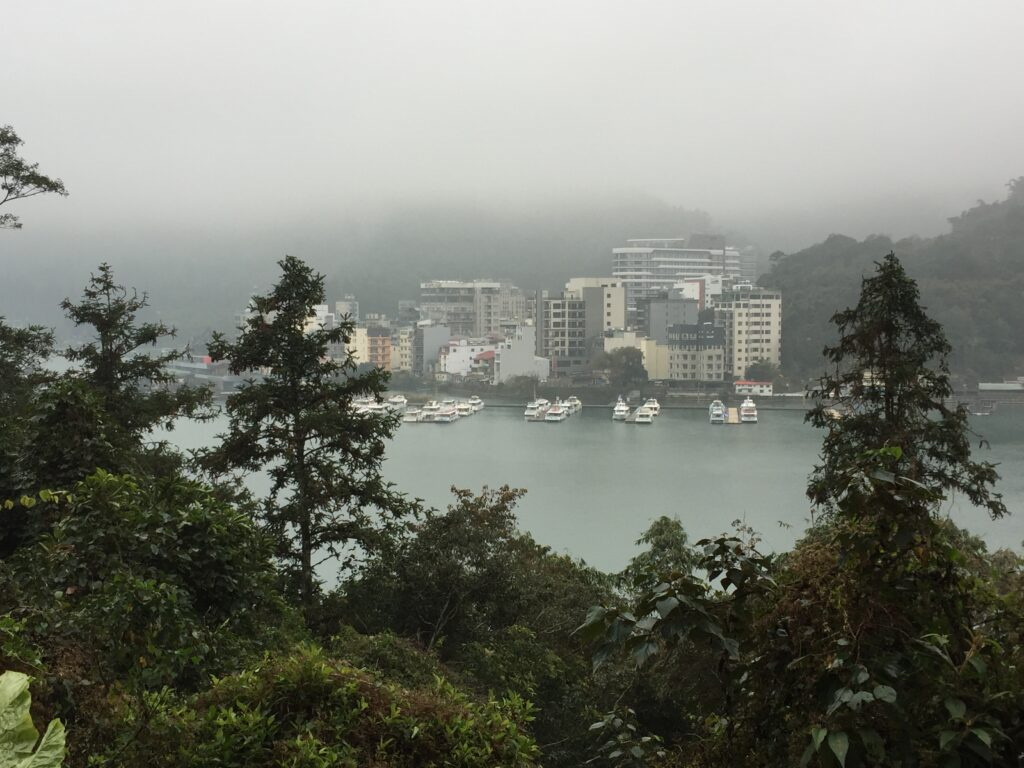
It was well into the third hour when I returned the bike to the shop. The owner greeted me with a smile and gave me a boiled egg as a gift. I noticed that bike rental businesses in Taiwan also seem to sell ice creams and boiled eggs on the side. It was an interesting combination. Perhaps people needed an energy fix after a few hours in the saddle. I offered the man another €100 for the third hour I had the bike but he refused to take my money. Bless him. I hope he had a healthy bowel movement before bedtime that night.
PLANES, TRAINS AND AUTOMOBILES
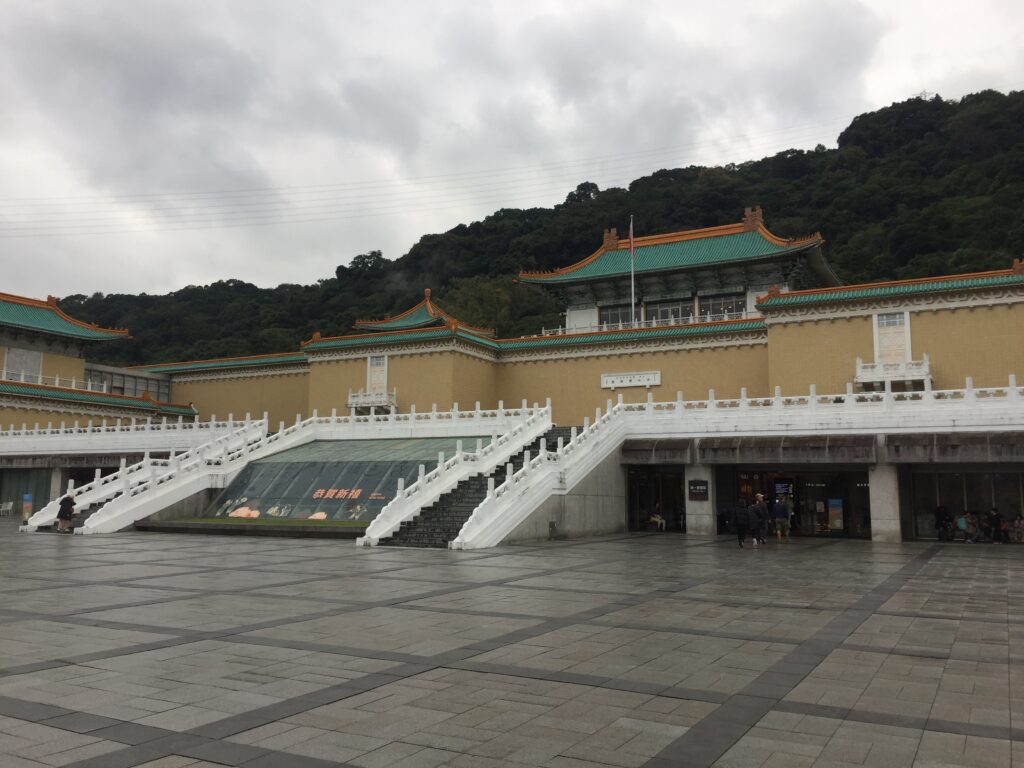
I returned to Taipei the following day to catch my evening flight off the island, but I had one last thing to do before leaving Taiwan. The National Palace Museum in Taipei, which as I mentioned houses the world’s most extensive collection of artifacts from Chinese dynasties dating back thousands of years, was the country’s most prestigious museum, and one all guide books said was not to be missed. Though I had given it a pass in favour of other sights on my initial visit to Taipei, I didn’t feel my trip to Taiwan would be complete without paying it a visit. My flight out was leaving at 6, so I figured that I could get to the museum by 12, spend about 2 hours there, and then negotiate all the transport connections to make it to the airport in time. I took an early high speed train out of Taichung. The only seats on the 10 am train were unreserved. That didn’t sound like it would be a problem, until I got on and discovered that half of Taiwan had unreserved tickets as well. For the first portion of the journey I felt like I was in a mosh pit for a Pearl Jam concert, but a seat opened up later on and I could finish the journey in relative comfort. I deposited my bag in a locker at the Taipei Main Station, and then took the metro out to the National Palace in the north of the city. The actual museum was about another 2 km from the metro station, and while I’d normally walk, today, to save time, I decided to take the bus. As luck would have it, there was a bus waiting just outside the door of the metro station to take me to the museum. All was going according to plan.
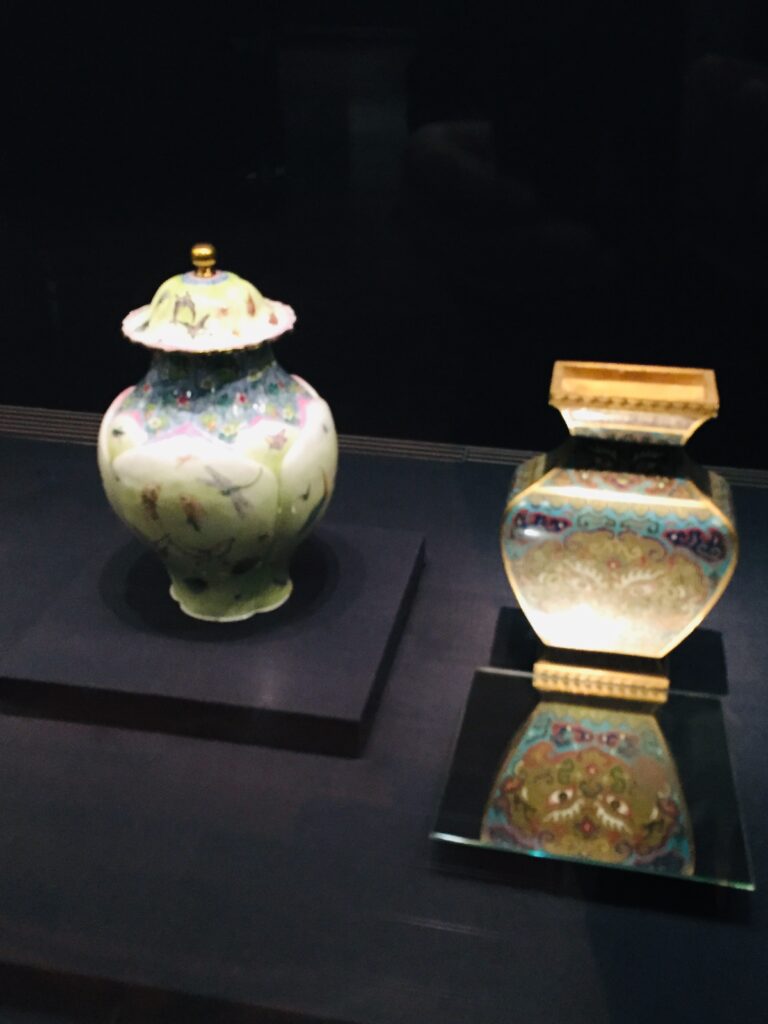
Chiang Kai Shek had to good sense to take as many items of cultural value when he fled the mainland in the 1940s, and today the National Palace houses a priceless array of porcelain, jade works, manuscripts and objects from the different dynasties that ruled China over the centuries. Thousands of artifacts are spread out across the three massive flours of this museum, and two hours was barely enough to scratch the surface of this most impressive repository of Chinese treasures. Omitting it would have nagged at me for all eternity, but now that I had ticked that place off my list I could leave Taiwan a satisfied man. All I needed to do was return to the train station, collect my bag and go to the airport. What could be more straightforward.
Taipei Main Station is a city unto itself, with its own shopping mall, food courts, and more levels than a Super Mario Brothers game. There are so many entrances and exits, it feels like everyone in Taiwan has their own personal one. I had taken brief notice of where I left my bag, and assumed that I’d find the lockers easily on my return. However, the scant trail of mental breadcrumbs I had left had disappeared upon my return and I was now faced with the dilemma of being unable to find the place where I’d deposited my bag. I thought the locker was near a 711, but that wasn’t going to narrow things down much. I wandered about for a while, and I discovered that navigating the Taipei Main Station was as complex as differential calculus, an American tax return, and the plot of a Christopher Nolan film combined. The clock was ticking and I had a train to catch, so I started to feel a certain amount of panic set in as I was potentially faced with a fairly annoying first world problem – missing my flight to my next exotic destination, or going without my bag, which was essentially just laundry at this point.
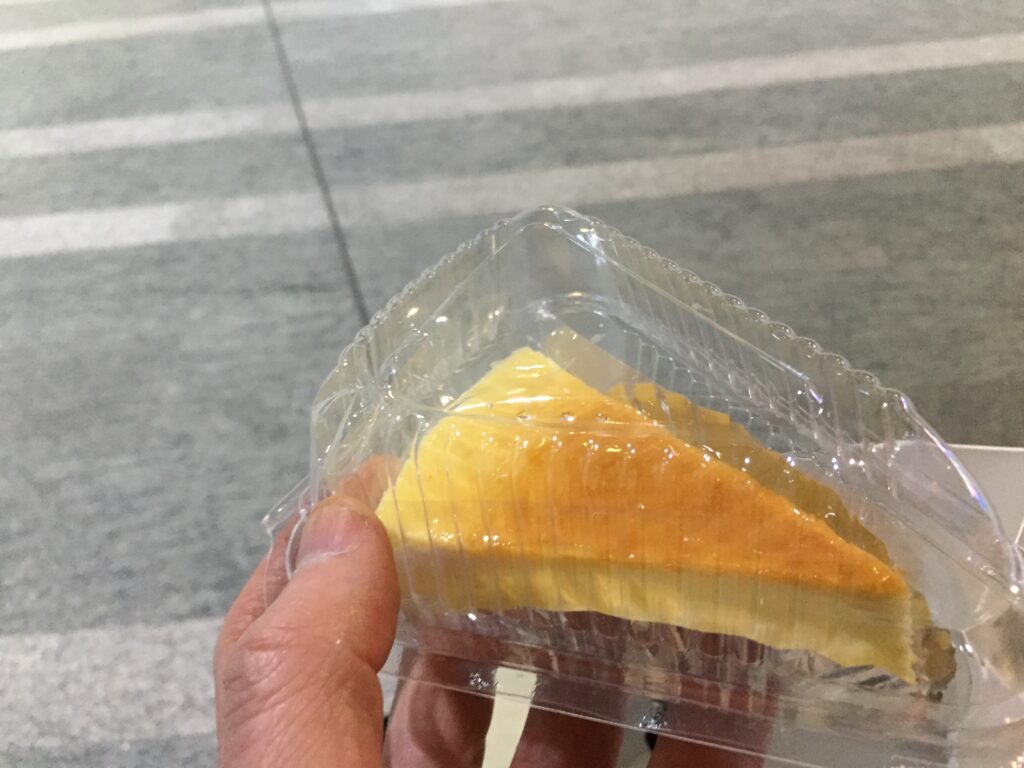
I passed a cake stall next to a 711 (not the 711 I was looking for) and I asked the young lady who worked there if she knew where the lockers were. She very kindly rang a number, and gave me the instructions where to go. I bought a slice of cheesecake and thanked her for her efforts. It was just another example of the friendliness and helpfulness I’d experienced from the Taiwanese people during my 12 day trip. I found the locker and retrieved my bag. However, it didn’t look at all like the place I thought I’d deposited it. Either I wasn’t very observant the first time, which is a possibility, or I’m living in a computer simulated reality and the mainframe altered the surroundings in the time I was gone. Also a possibility. There had been a lot of unusual happenings and happy coincidences on this trip for them all to be down to chance. Whatever the cause was in this case, the panic was over and it was now time to take to the skies.
Ironically, when I reached the airport it turned out my flight was delayed but I never think spending time in airports is time wasted. Airports are stages where human dramas are played out every day. A diverse cast of international participants each has their own story to tell as they are embark or return from their travels. It’s always interesting to watch the different faces and try to decipher what’s each person’s reason for being there. Mine was adventure, and Taiwan had proven to be a wonderful destination. The country is much talked about for all the wrong reasons these days, and to see it before anything bad happened was one of my main motives for visiting. I hope it remains a land of peace and prosperity in the years to come, and thousands of others get an opportunity to visit this charming island of big, exciting cities, beautiful natural scenery, temples and traditions, delicious food, enchanting sunsets and warm, welcoming people. And great egg waffles in Kaohsiung.